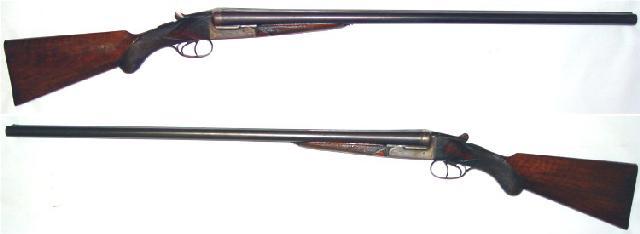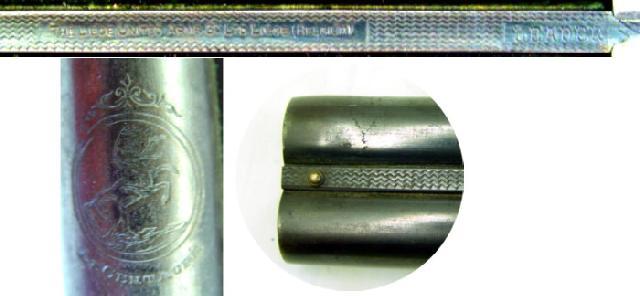Some of the most beautiful work of this craftsman, and many others, are in this book “Liège Gunmakers through their Work. 1800 - 1950”.
For more detail see: LIEGE GUNMAKERS
Fabrique d’Armes Unies de Liège (FAUL)
This is a
fine 16-gauge, twin-barreled side-by-side shotgun. The lock has external hammers
(operated by two triggers), a top lever key, and a pistol-style stock. The metal
parts are partially scroll-engraved, and the stock and fore-end are finely
checkered. This is clearly a well-preserved, high-quality weapon.
Markings:
The
shotgun displays the full range of usual Liège markings and hallmarks.
Annal
letter i: 1930.
"Proven
with pyroxylated powders," barrel band.
Numbers
and numbers: 7549, several places, probably serial number.
15, 512,
assembly aids.
Full
choke, barrels.
Lion on
PV: Smokeless powder proof, in use since 1898.
CHOKE
16.9: Choked barrel, in use since 1924.
ELG on
star in crowned oval: Acceptance, in use since 1893.
1.498 kg:
Barrel weight, in use since 1924.
16-70 in
omega couched: Nominal caliber and case length, in use since 1924.
AE
joined, M and S under star: Inspectors' countermarks, in use since 1877.
EL in
cursive: Provisional proof, in use since 1852.
Perron:
Inspection since 1853.
The
barrels bear a logo representing a centaur as well as the inscription "Le
Centaure". This trademark was registered by La Fabrique d’Armes Unies de Liège
(FAUL), 22 rue Trappé, registered with the Liège proof house since 1920. This
company is well known and identified on the website.
In summary, this 16-gauge shotgun was produced in 1930 by La Fabrique d’Armes
Unies de Liège (FAUL).
Chris, HPH
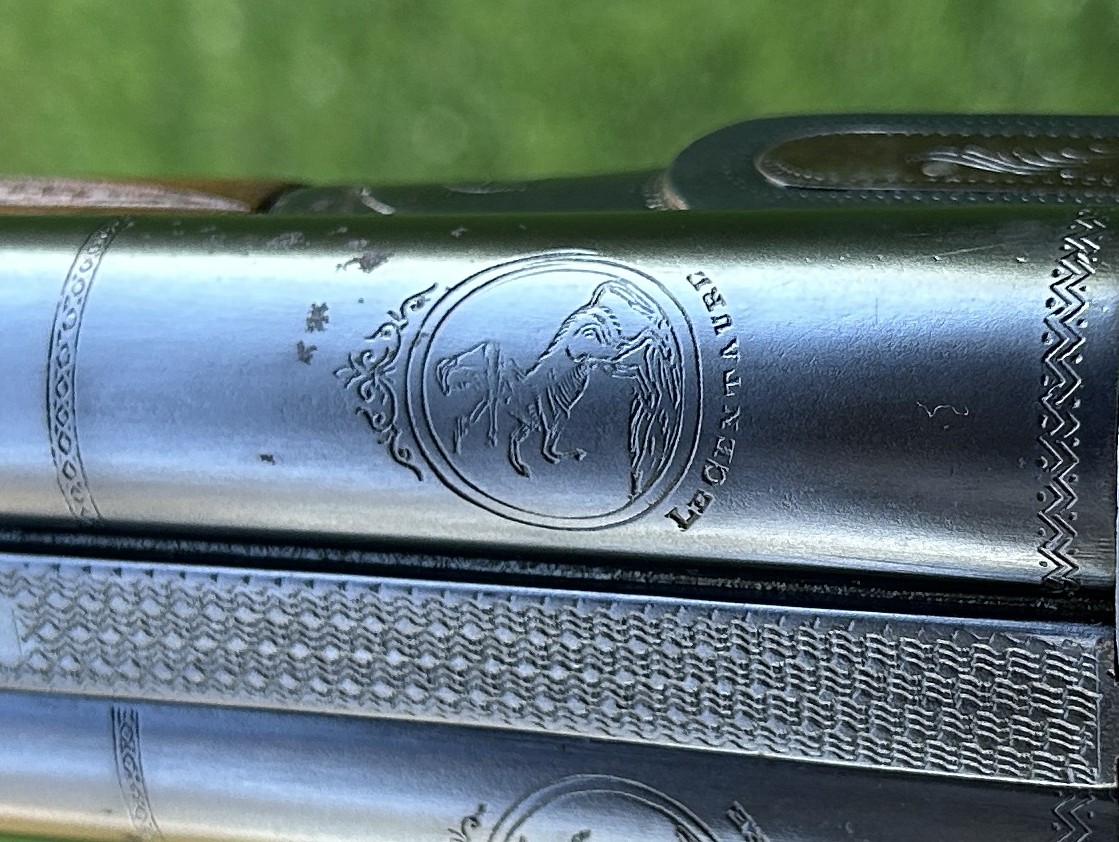
Fabrique d’Armes Unies de Liège (FAUL)
Centaure
by George D.
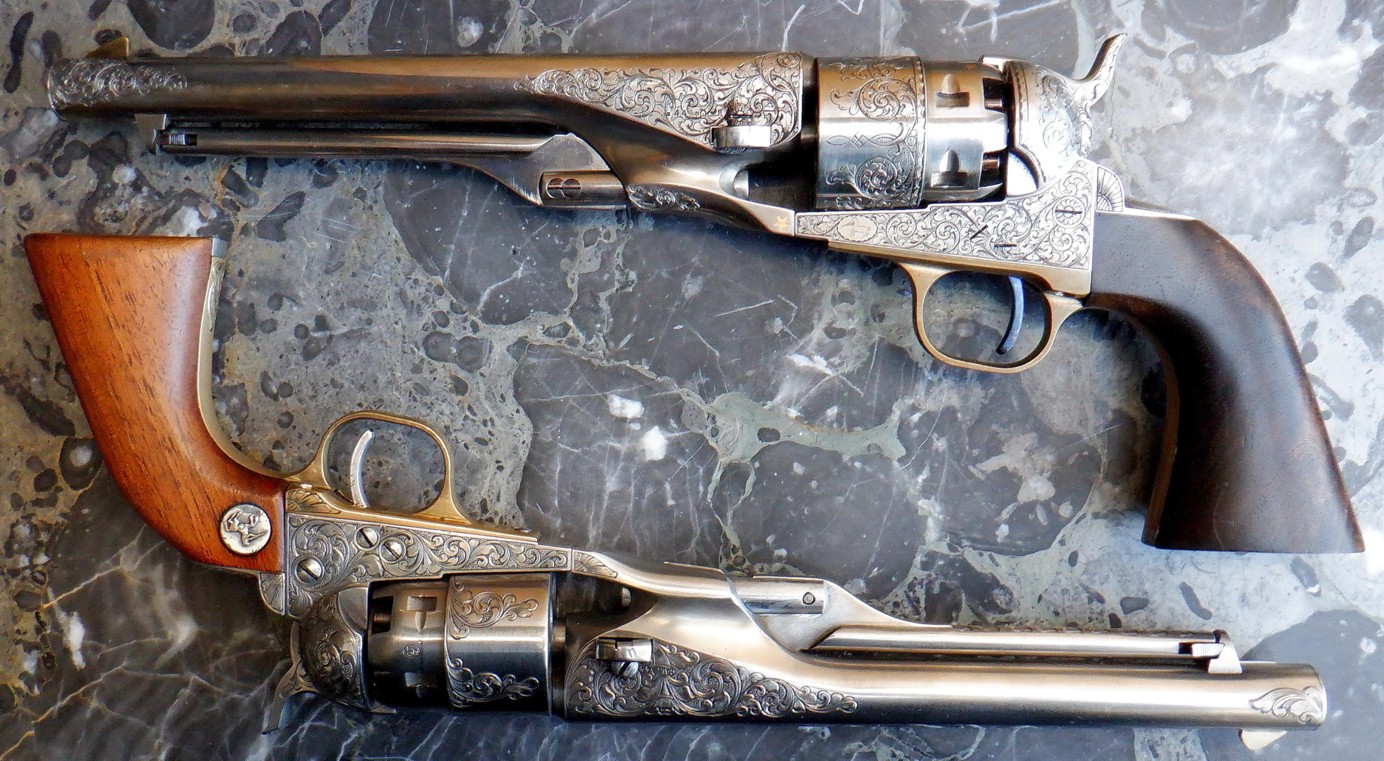
This
photo shows two “Colt Army Model 1860 Centaurs”, the one on the bottom is a
Deluxe model and the one on the top is a custom model from the work of Mr. Alain
Lapierre

Left side
of the model customized by Mr. Alain Lapierre. This revolver has undergone
various modifications, all parts of it have been reviewed, polished and possibly
transformed.
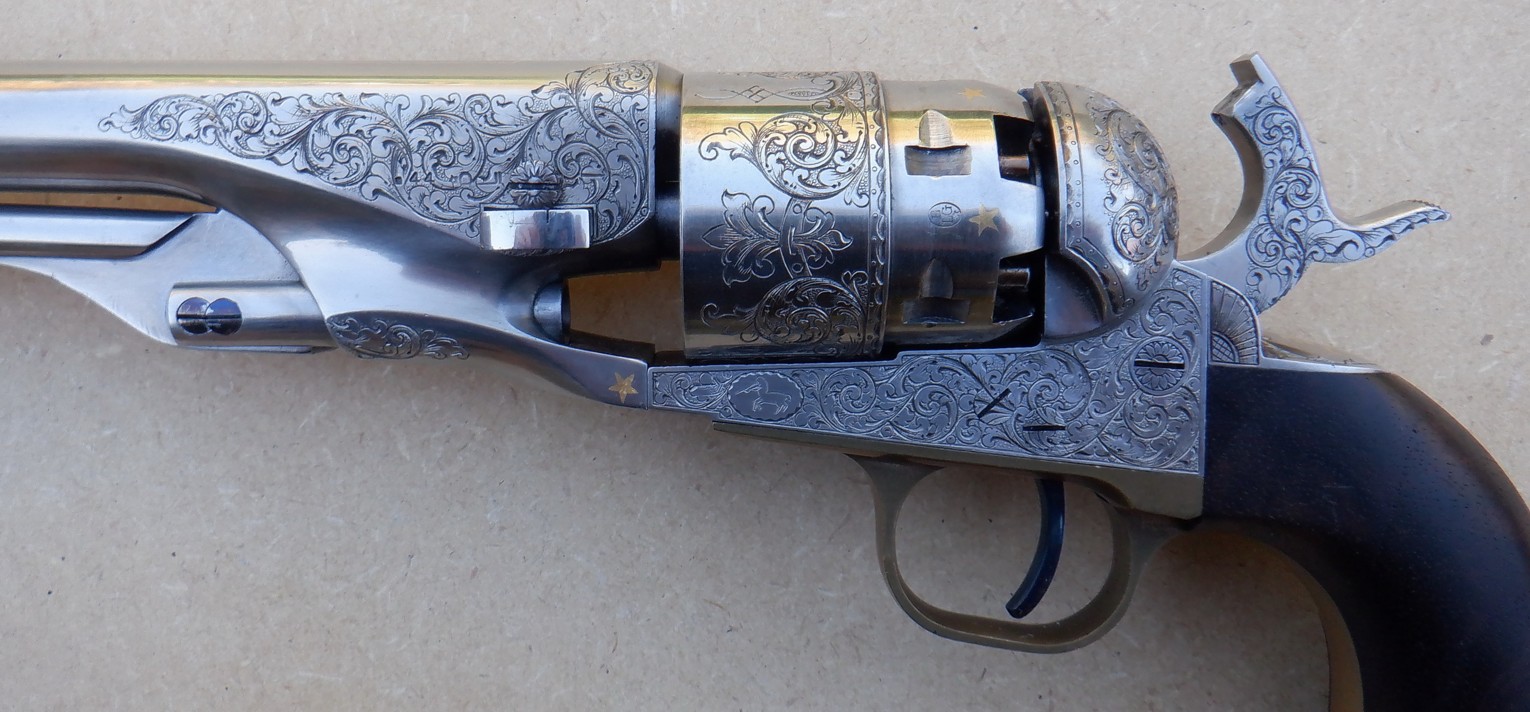
Detail of
the left flank where one can see a mark of an inspector of the Liège proofhouse
“D”.
You can
also see the calibre “.44” and the Peron to the right of the screw of the key.
Another sign cannot be identified with certainty. Finally, on the cylinder the
final check mark for black powder.

Right
side of the model customized by Mr. Alain Lapierre

Detail of
the right side. Note the inlay of small stars on the barrel and the carcass.

The rear
of the revolver. You can see the monogram of the name “Alain Lapierre” on the
top of the grips. Note, the photo is affected, at the level of the inlaid star
clearly visible, by a golden reflection on the barrel that has nothing to do
with any inlaid!
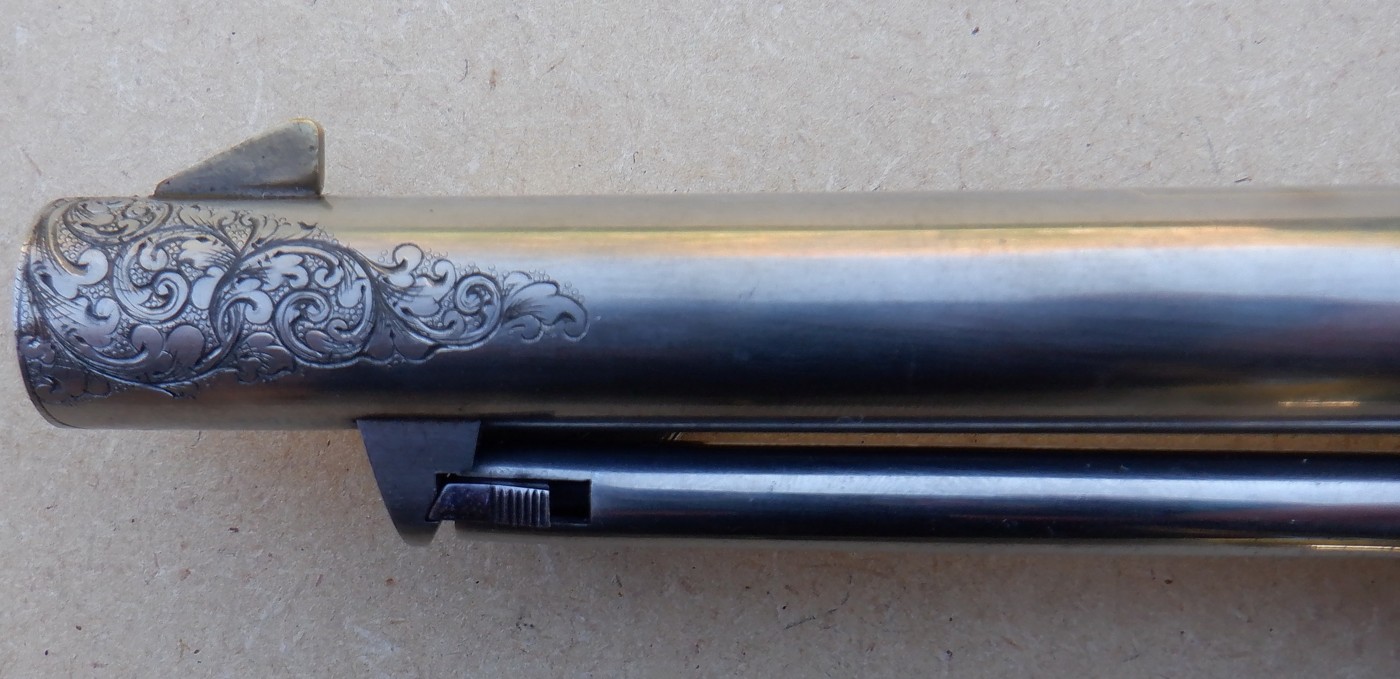
The end
of this barrel and more especially the rounded muzzle of the barrel gives
information cross-checked by the mark of the inspector of the Liège proofhouse,
this barrel is believed to be of the first generation of the manufacture of this
weapon.
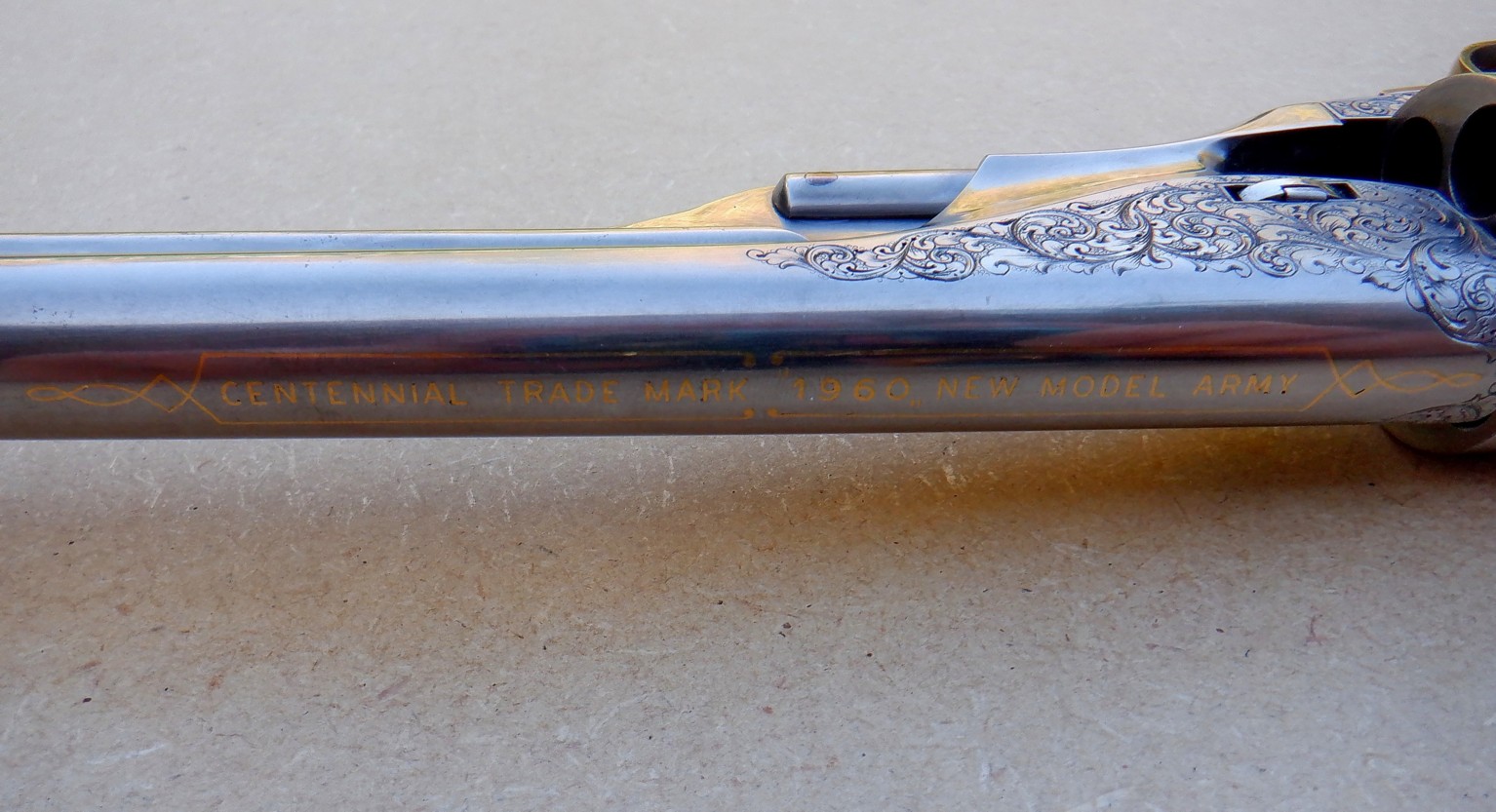
The
inscription “CENTENNIAL TRADE MARK” 1960 “NEW MODEL ARMY” is written by inlaid
letters on the top of the barrel. This name is not taken up by the various
copies of the Colt Model Army 1860 revolver made by FAUL-Centaure! Check on
which series of revolvers it can appear!
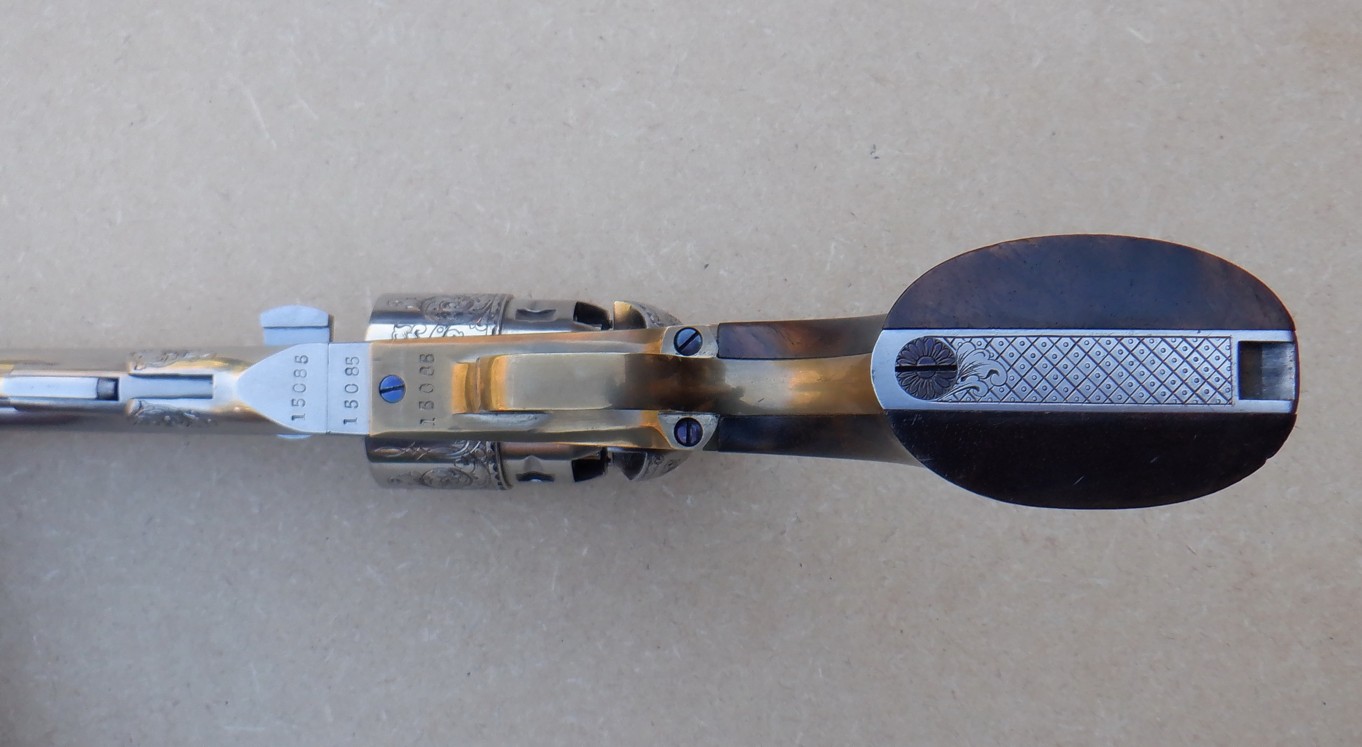
The heel of the butt does not bear the inscription
“Made in Belgium”, which traditionally appears on revolvers produced by
FAUL-Centaure! On the other hand, even the heel screw is engraved. One can also
read the serial number, 15085, whose peculiarity is to evoke the date of birth
of Mr. Alain Lapierre, that is to say 15.08.1958.

Engraving
of the Deluxe model and wolf head engraving of the gun hammer. Note also that
the outlet is articulated on a single screw!
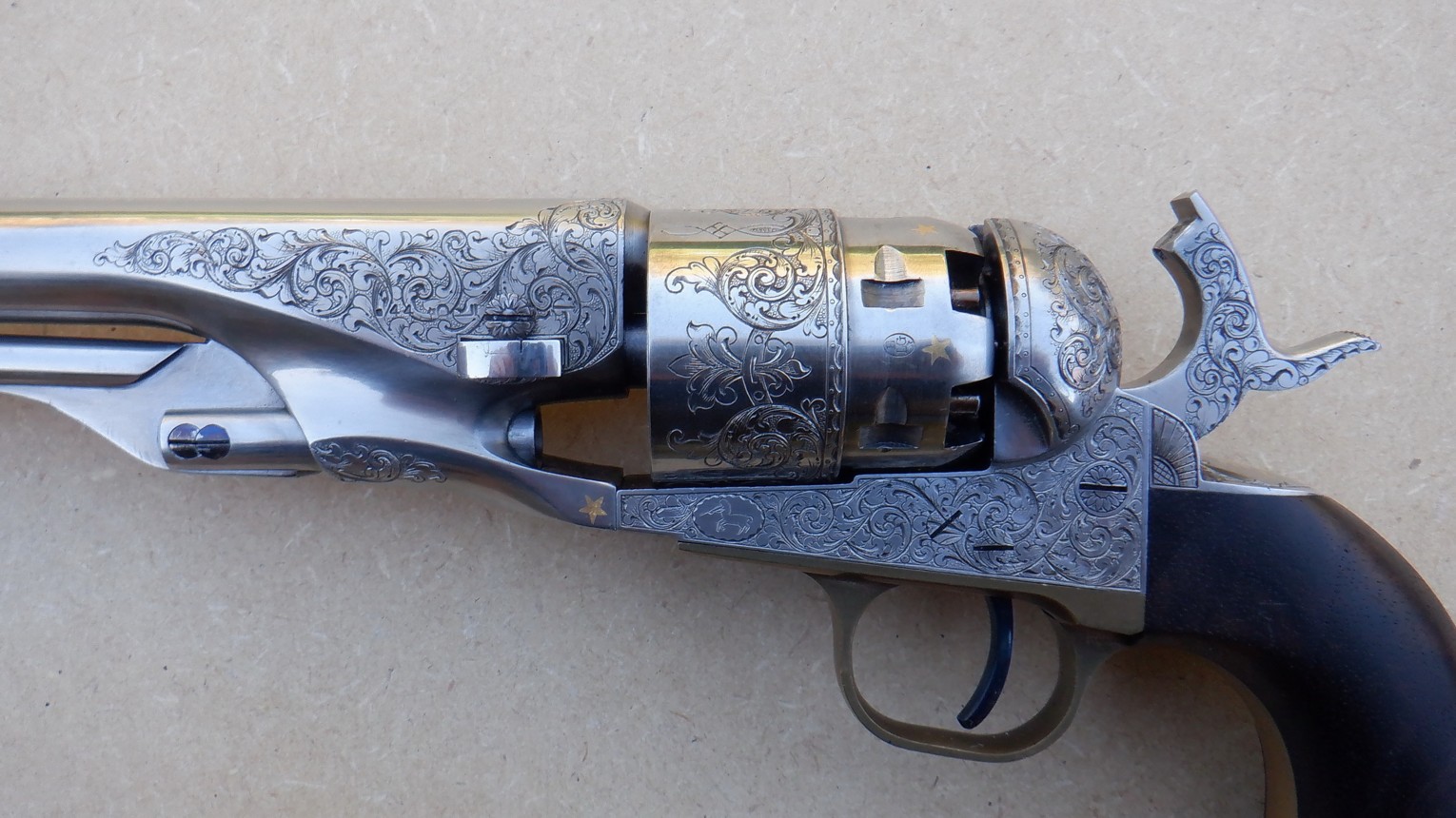
Engraving
of the Lapierre model, it can be noted that the engraving of the wolf head of
the commercial production of the Centaurs was not reproduced on the hammer of
this revolver. Note that the outlet has two screws, one for the articulation and
another for the blocking of the first mentioned. This arrangement is original
and decided by Mr. Lapierre.
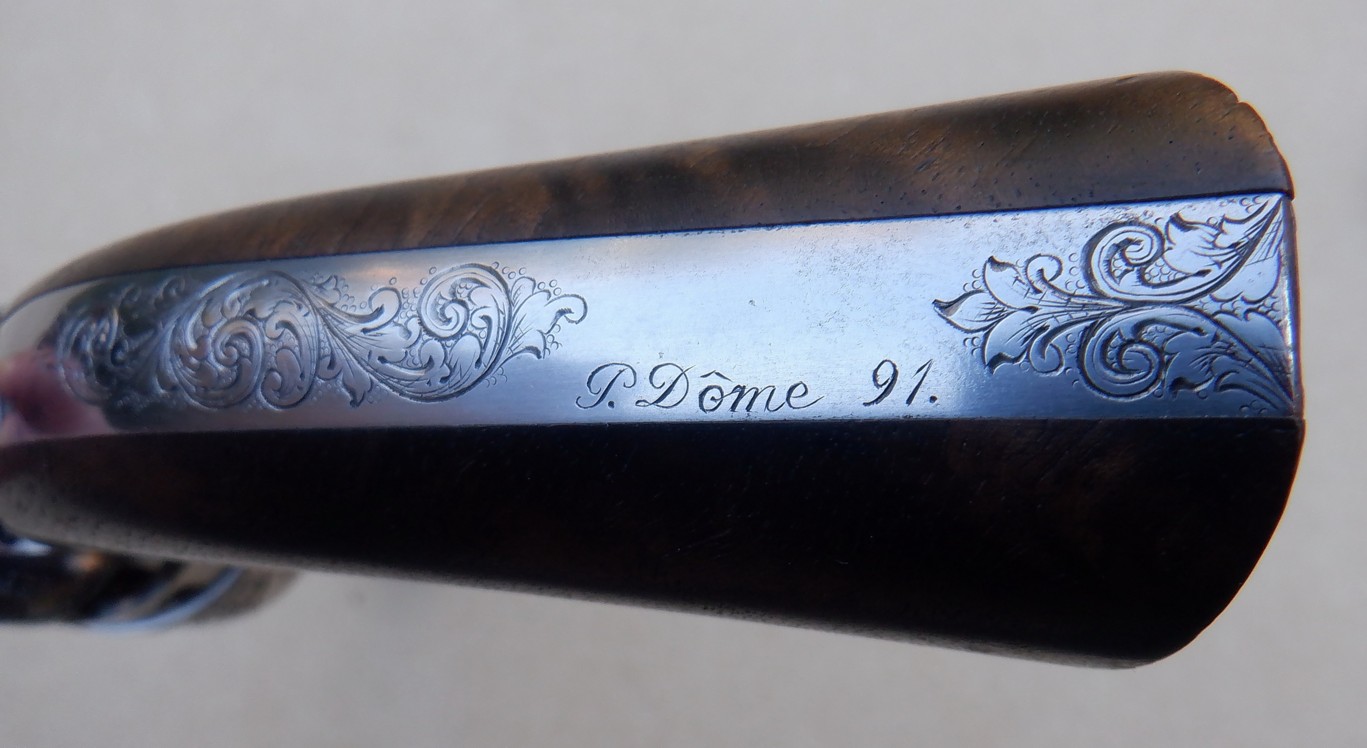
On the
back of the grips you can see the signature of Mr.Pierre Dôme who made, in 1991,
the engraving and inlay decoration of this weapon. At that time, Monsieur Dôme
was a student at the School Léon Mignon, he made this engraving under the
direction of Monsieur René Delcour, I think?
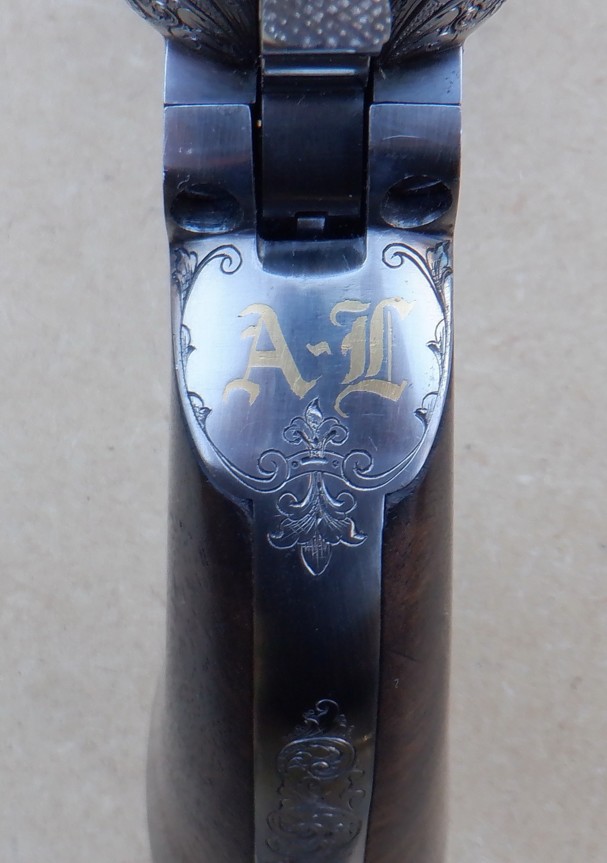
The AL
monogram for Alain Lapierre embedded on the shoulder of the butt by Monsieur
Dôme.

You can
see on this photo, the finish of the hammer of the Deluxe version, this hammer
does not show any particular polishing.
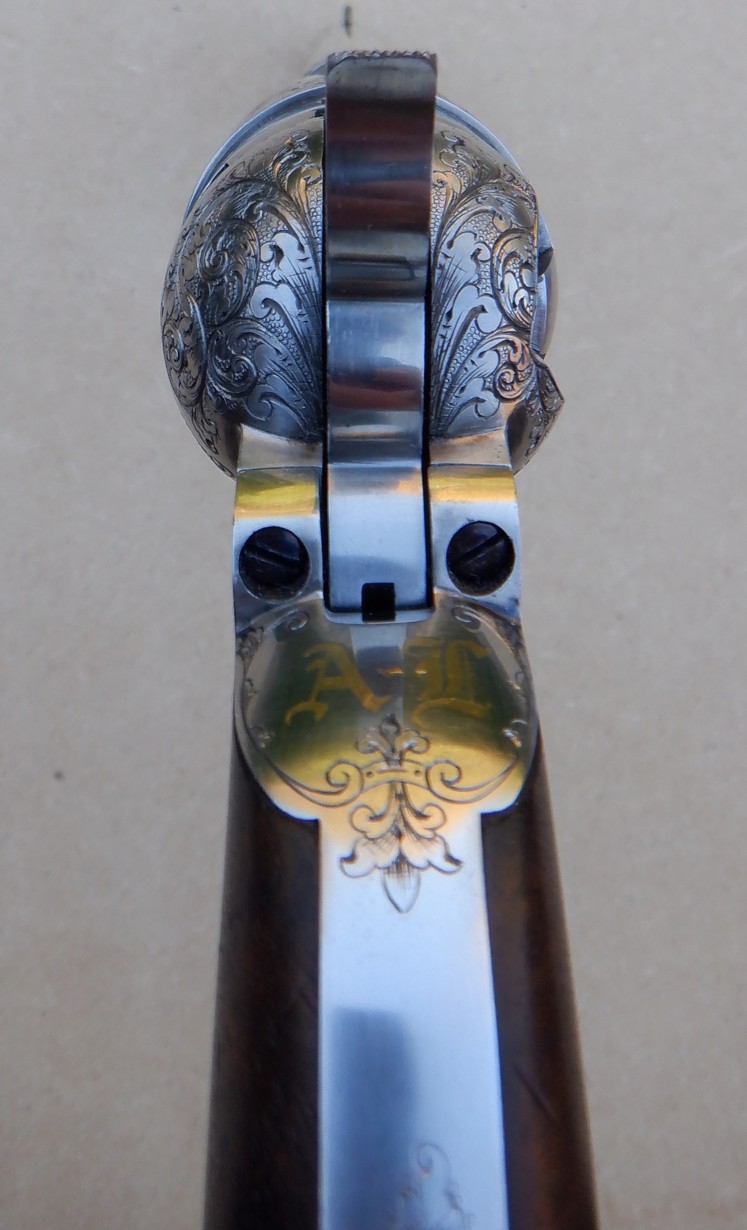
In this
photo, you can see the polishing work done by Mr.Lapierre. Anyway, the whole gun
was repainted to prepare for the work of engraving the gun. Mr. Lapierre has
suggested to me that other parts have been replenished and adjusted in the same
way as the parts of FAUL-Centaure’s production have not been. As an anecdote,
all the main screws of the gun, as well as those of the carcass, have a serial
number stamped on the side that is not visible from the outside.
Fabrique d’Armes Unies de Liège
Here is a classic shotgun
juxtaposed Anson & Deeley system manufactured in Liège by the
Fabrique
d’Armes Unies de Liège for export since the
name is in English.
The markings:
g: annal letter for 1928;
AC and p sub-star: controller countersigns, in use since 1877;
Lion on PV: smokeless powder test, in use since 1898;
ELG on star in crowned oval: accepted, in use since 1893;
12-70 in coated omega: nominal size, in use since 1924
1kg566: gun weight, in use since 1924;
CHOKE 18.2: choked gun, in use since 1924;
EL: provisional proof, in use since 1852;
LB in cartridge: barrel manufacturers Lambert & Bruyninckx or Lhermitte & Bruyninckx: I’m inclined to the latter.
Unfortunately, I did not find a corresponding trademark application.
GP with the help of PHL.
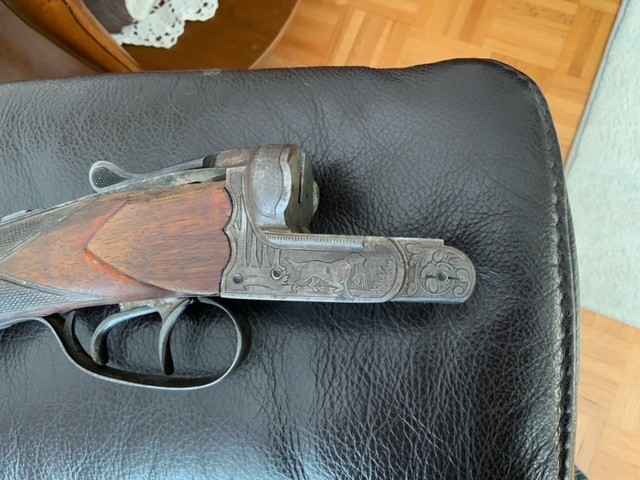
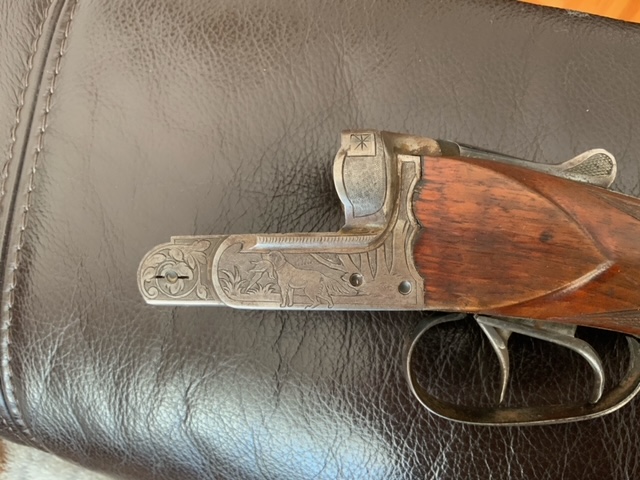

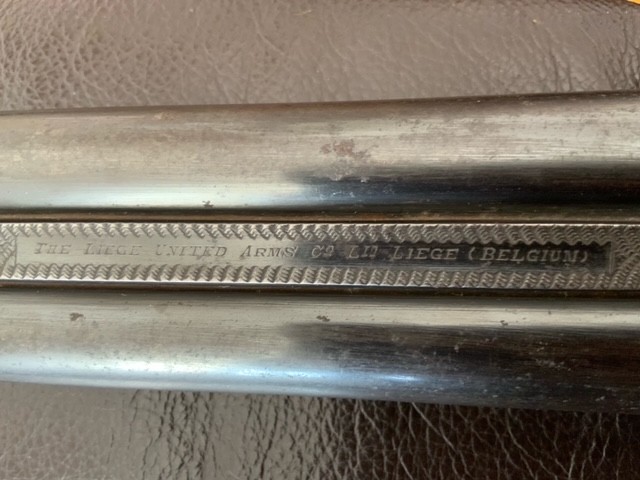

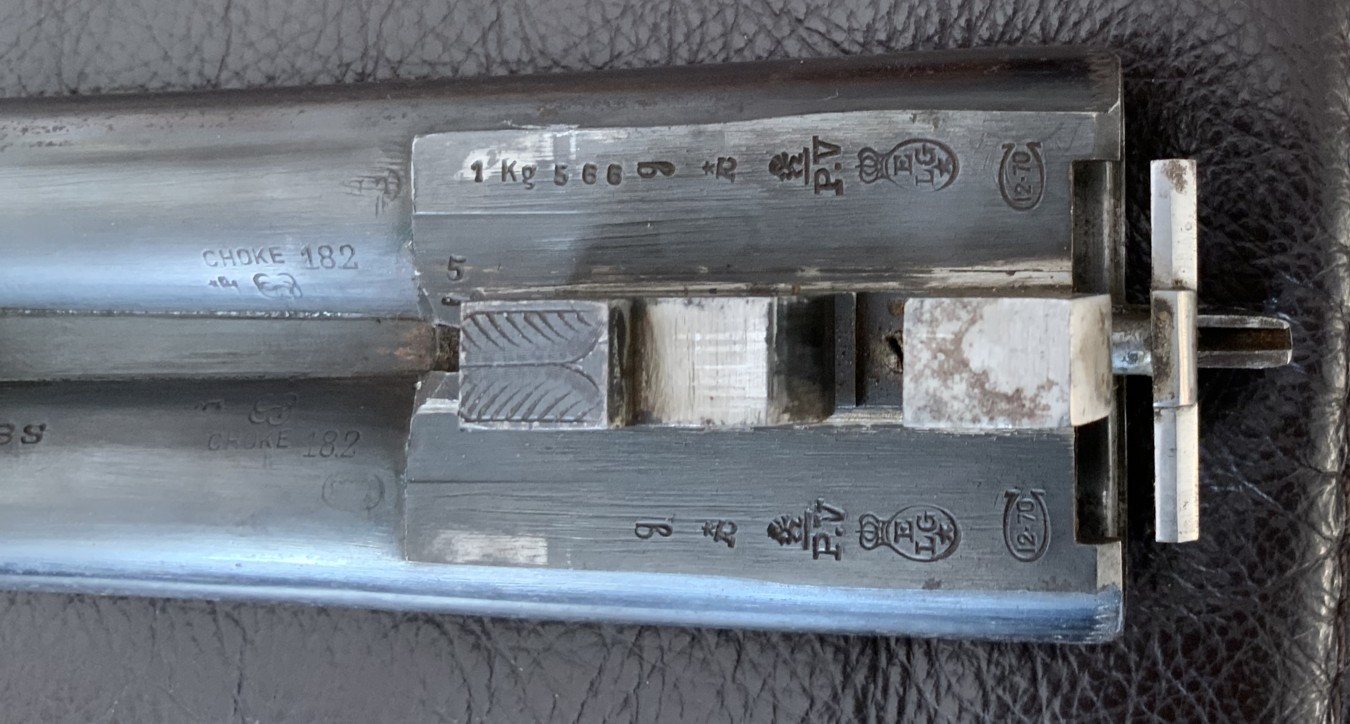
Fabrique d’Armes Unies de Liège
Here is a rifle manufactured by the Liège company Fabrique d’armes Unies de Liège – FAUL, rue Trappé, 22 in Liège, created in 1920; it has a sub-brand, Centaure, under which it manufactured for most of the 20th century copies of flint and piston weapons such as this rifle. This is a very frustrating production, both in terms of parts and woodworking, but nevertheless solid. The wood is not made of walnut, but rather of beech, said a member of the team who unfortunately disappeared. This is not surprising given that these are “cheap” arms, arms traded for export to Africa and Asia.
The rifle
was presented to the Liège proofhouse, as evidenced by the hallmarks:
ELG on star in an oval (large format): for mouth-loaded guns, in use since 1893;
18.0:
barrel diameter in mm.
GP
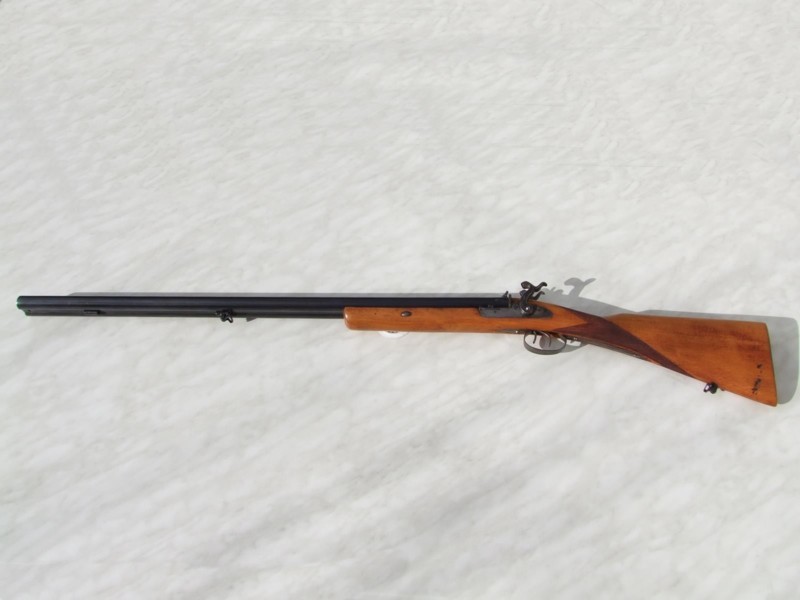
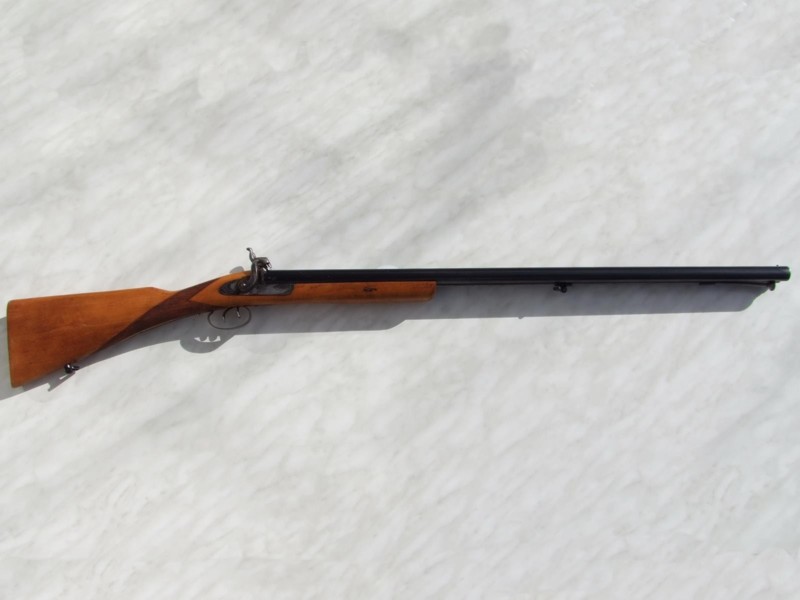
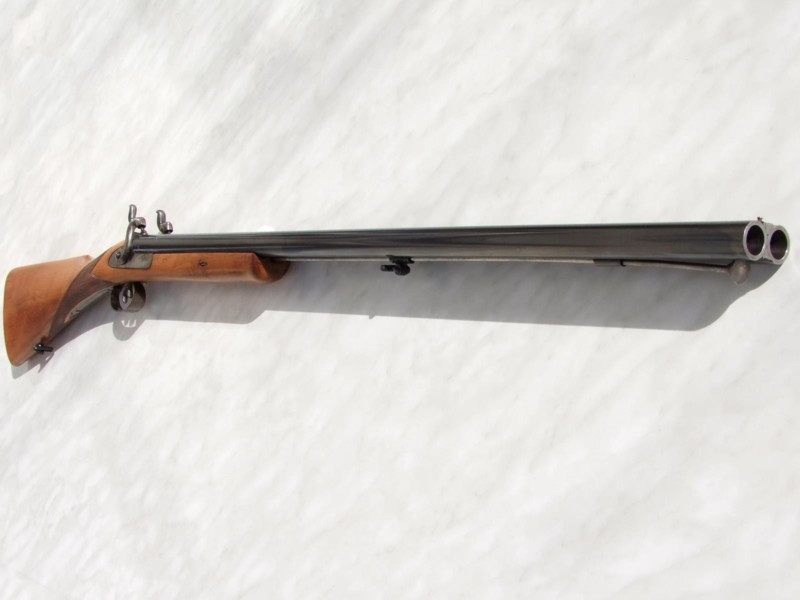
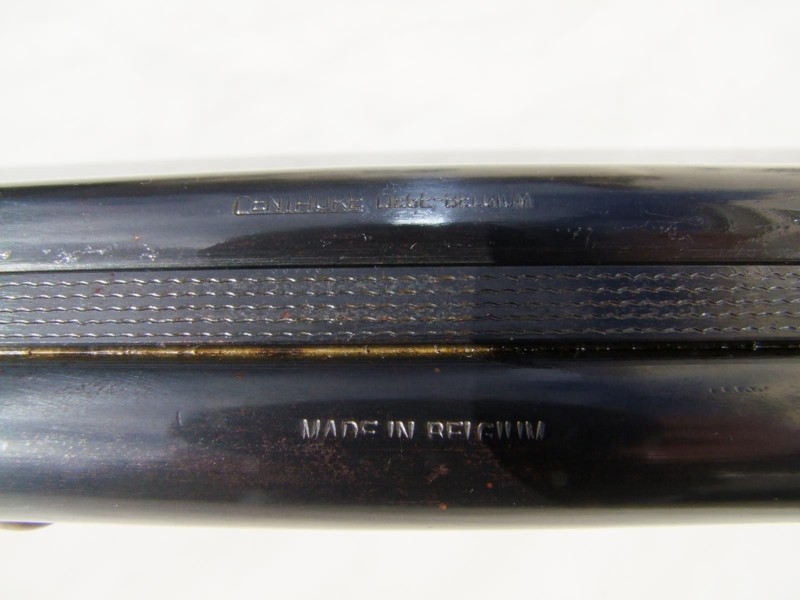
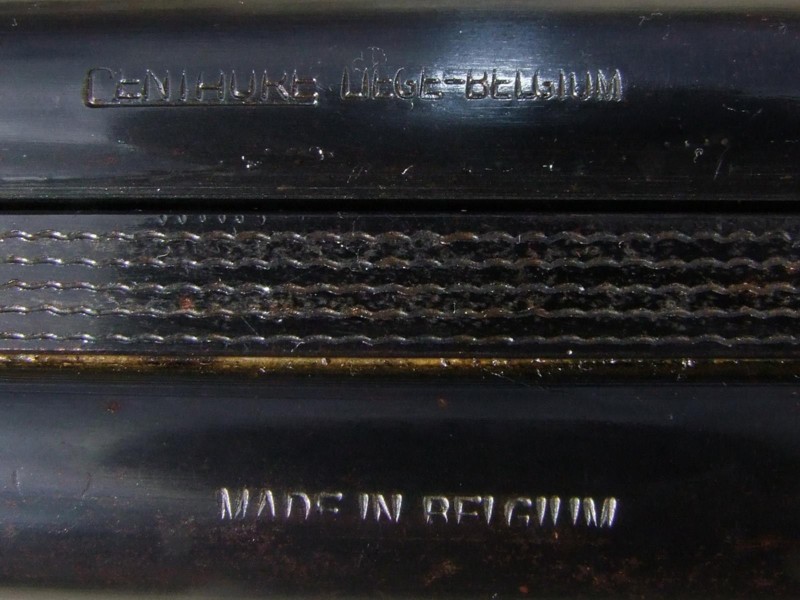
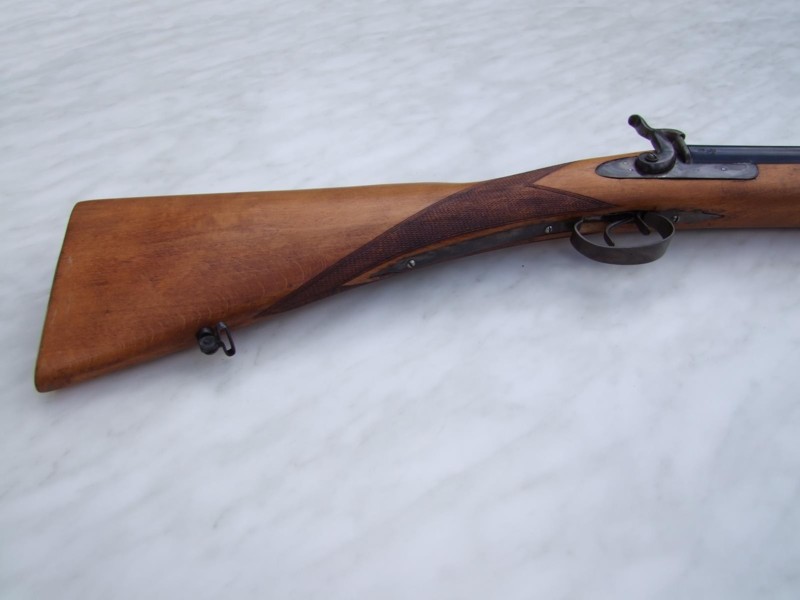
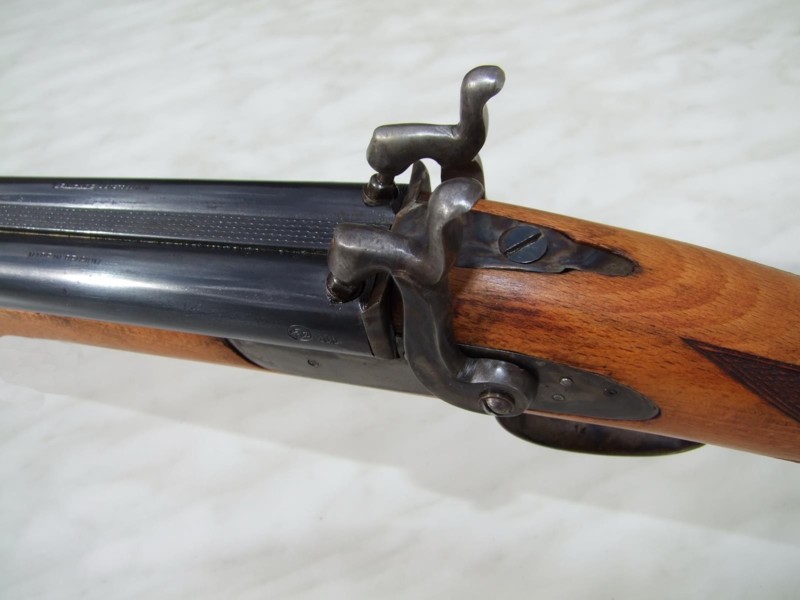
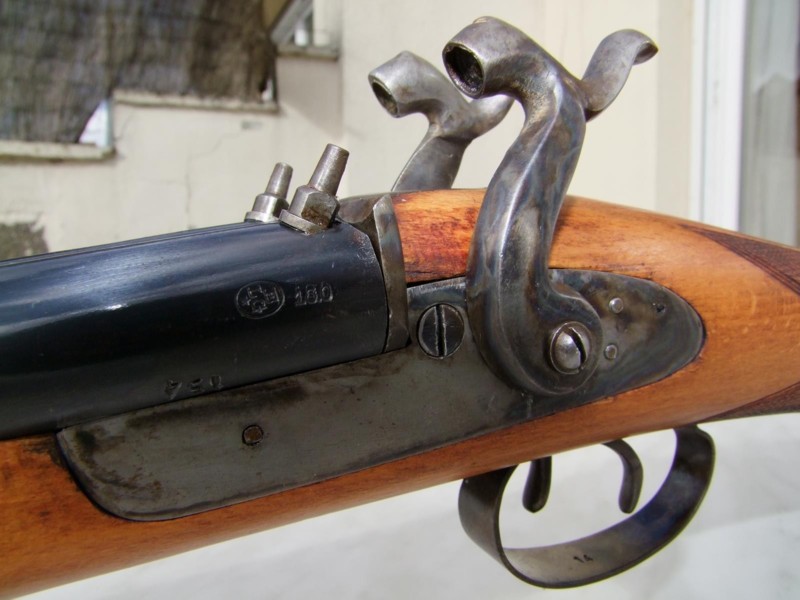
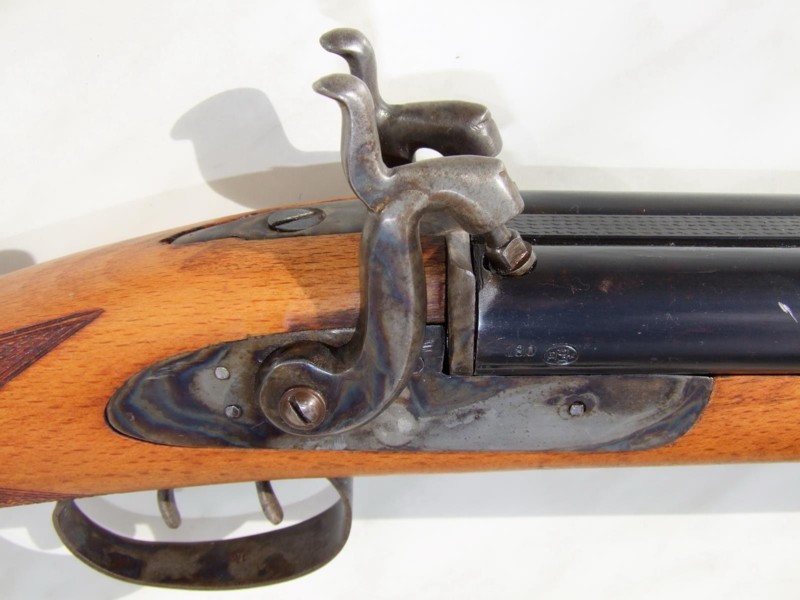
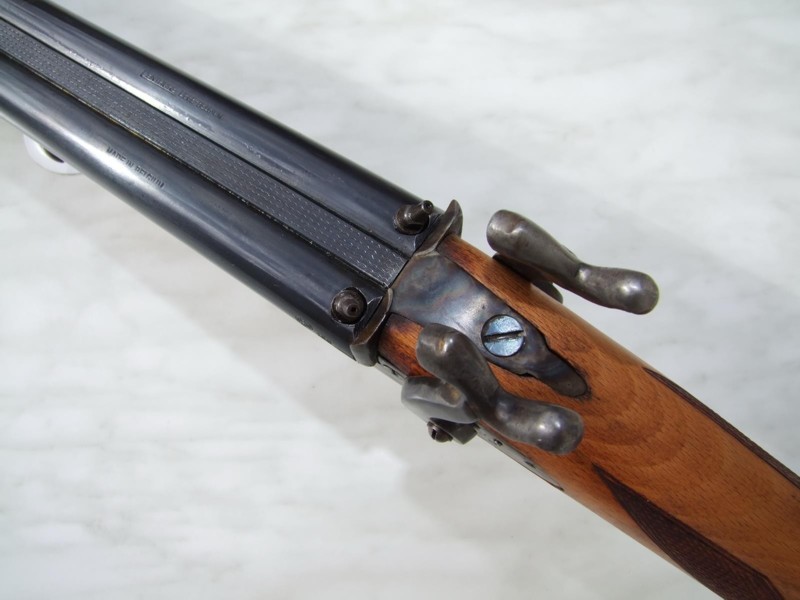
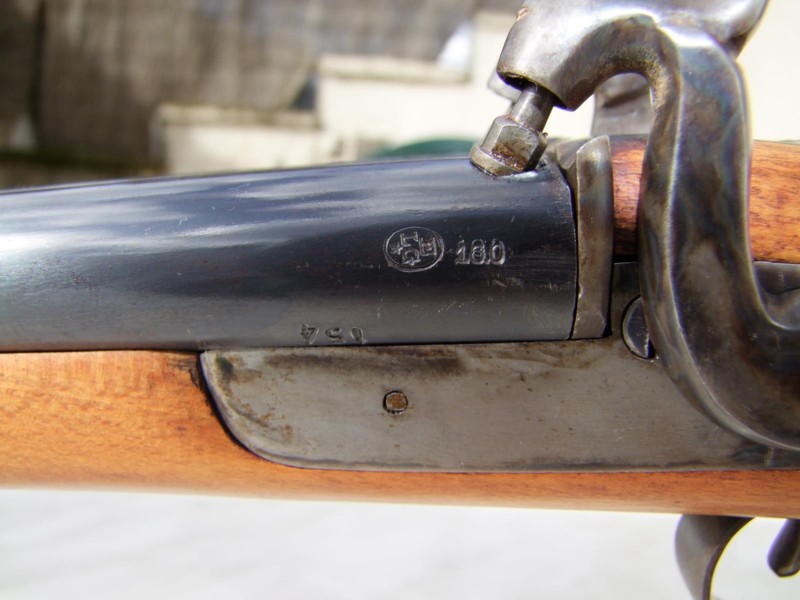
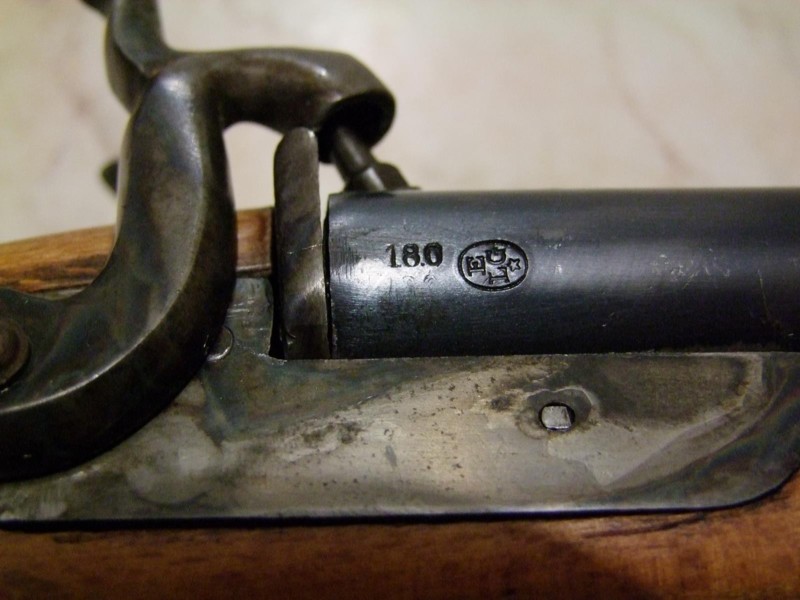

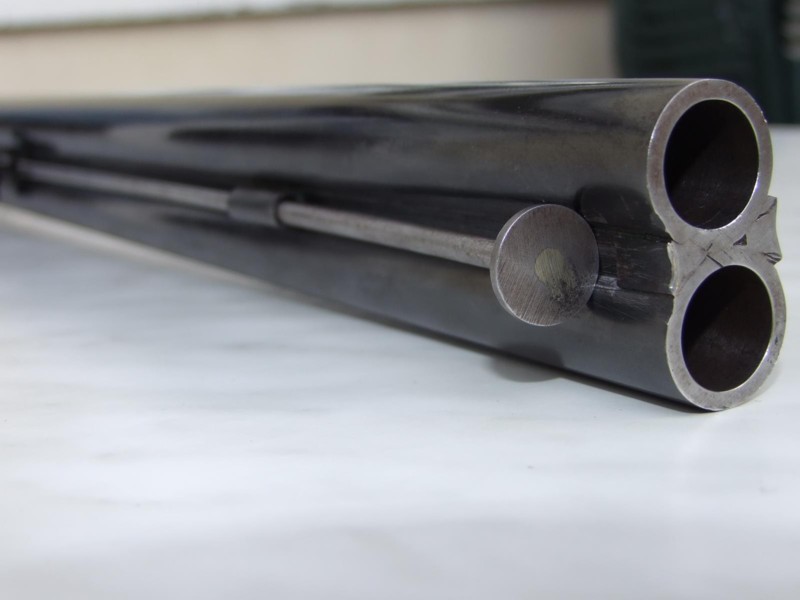
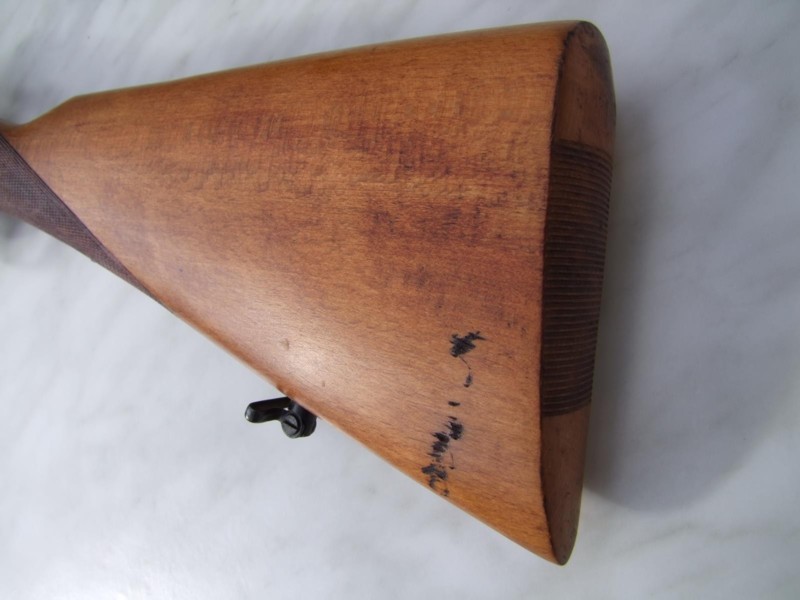
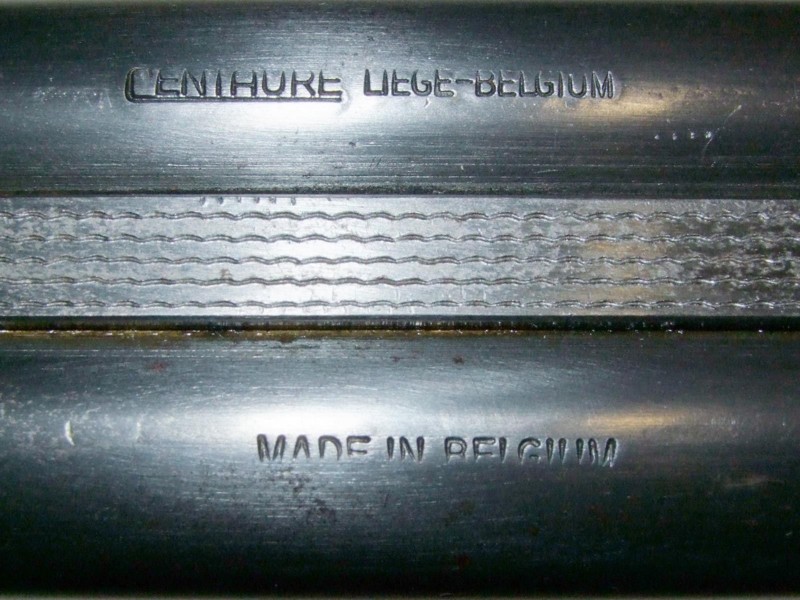

Fabrique d’Armes Unies de Liège
It is a
modern replica of a type Colt Army 1860 percussion revolver, with removable butt
fastening to the back of the handle using a hook and a knurled screw.
The butt is not present in these photos.
This weapon is called "Centaur".
The . 44
caliber barrel is round with a triangular front sight.
The
cylinder is smooth with six percussion chimneys.
Accessories such as the trigger guard are made of brass or sulphurous bronze.
The
entire weapon is covered with arabesques and gold inserts. The cylinder and the
hammer are decorated with also golden animals.
Punches
The weapon bears the stamp of the proofhouse of Liège,
ELG on a star in an oval:
definitive acceptance, in use from 1893 to the present day.
The other
punches of the proofhouse are not visible in the photos.
14: serial number.
Made in Belgium: no comment.
The name "Centaure" (half man half horse) is a sub-brand of the Fabriques d’Armes Unies (FAUL) rue Trappé, n ° 2 in Liège. During the 1960/70 years, this firm began to manufacture replicas of old weapons (tromblon rifles, American revolvers, flint pistols etc. ).
This text
was originally written by GG (†) and modified by Alain D.
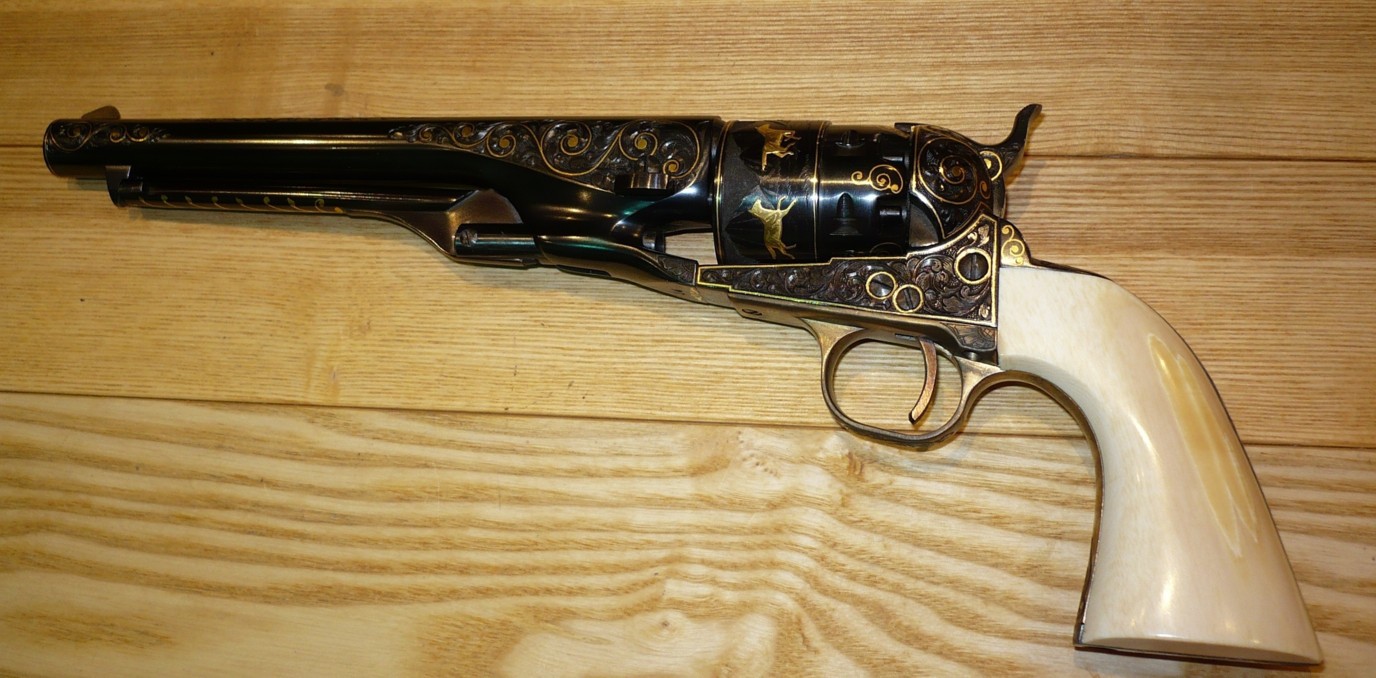

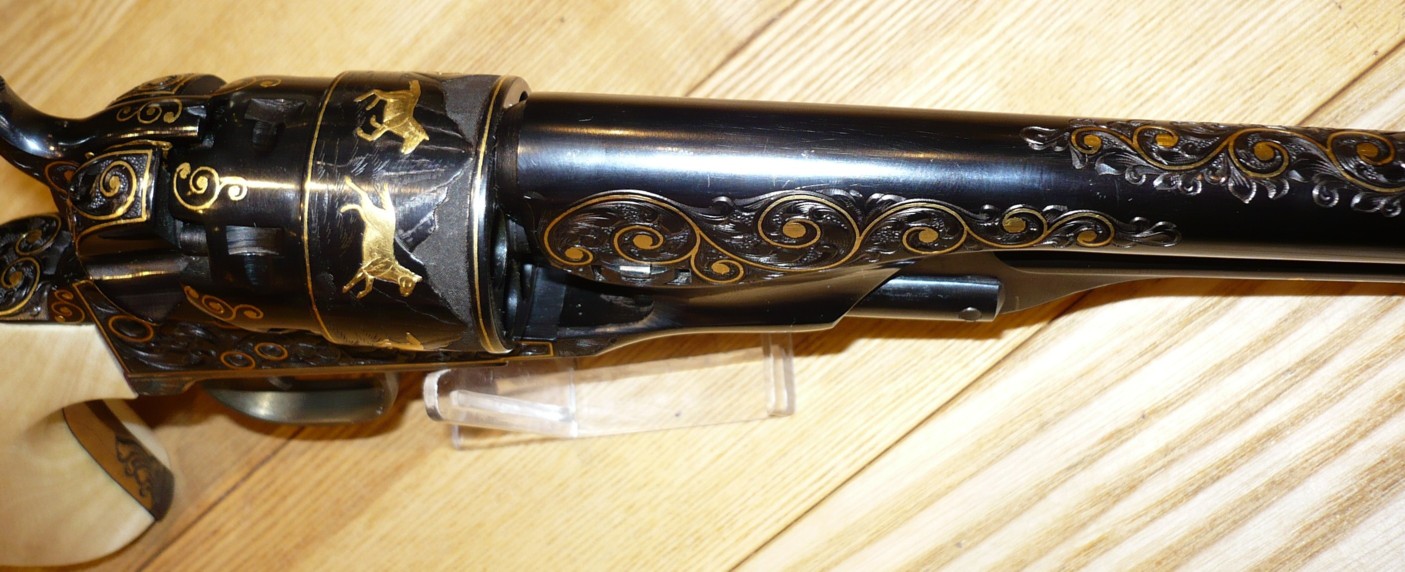
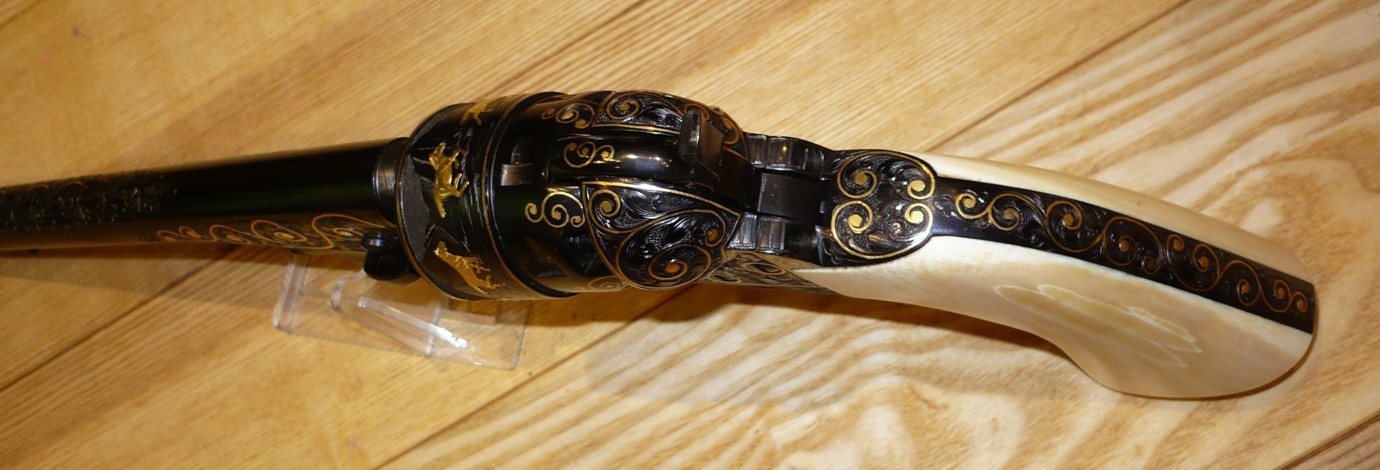
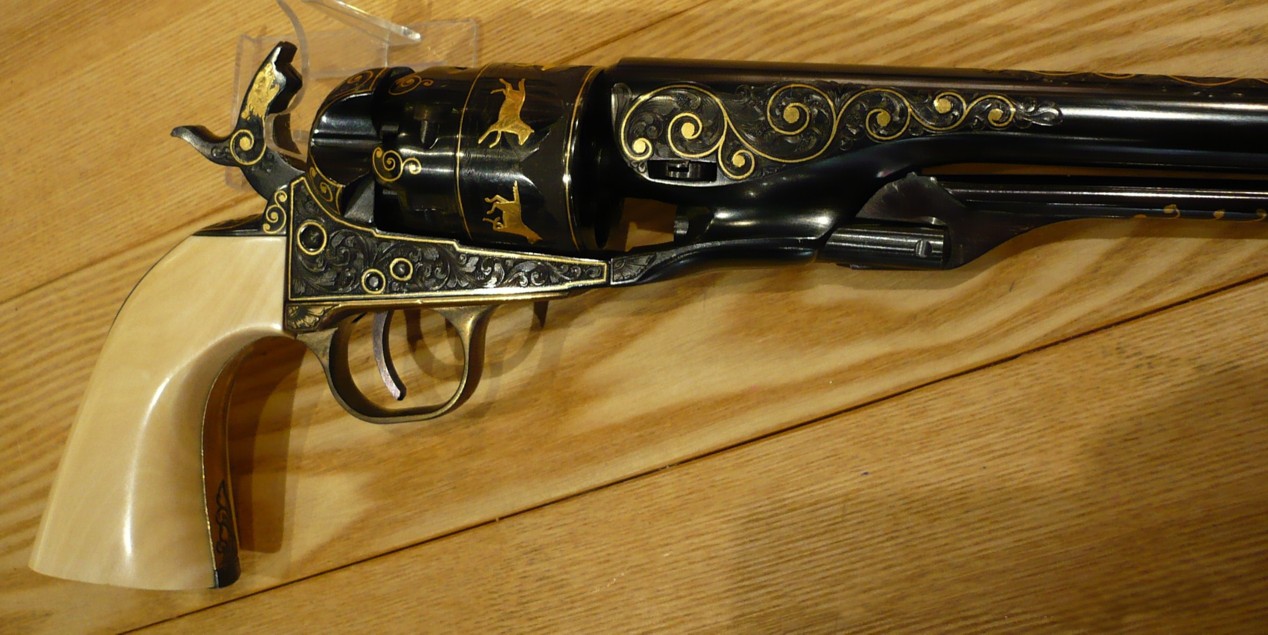
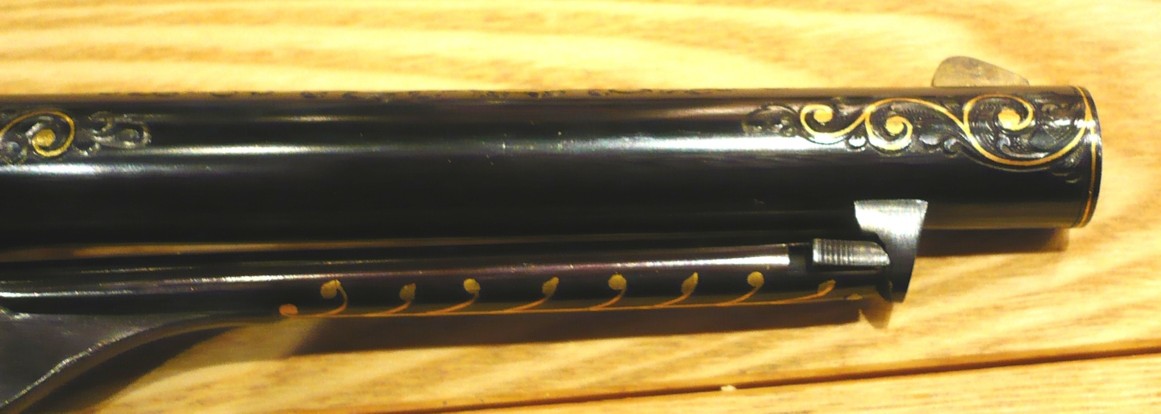

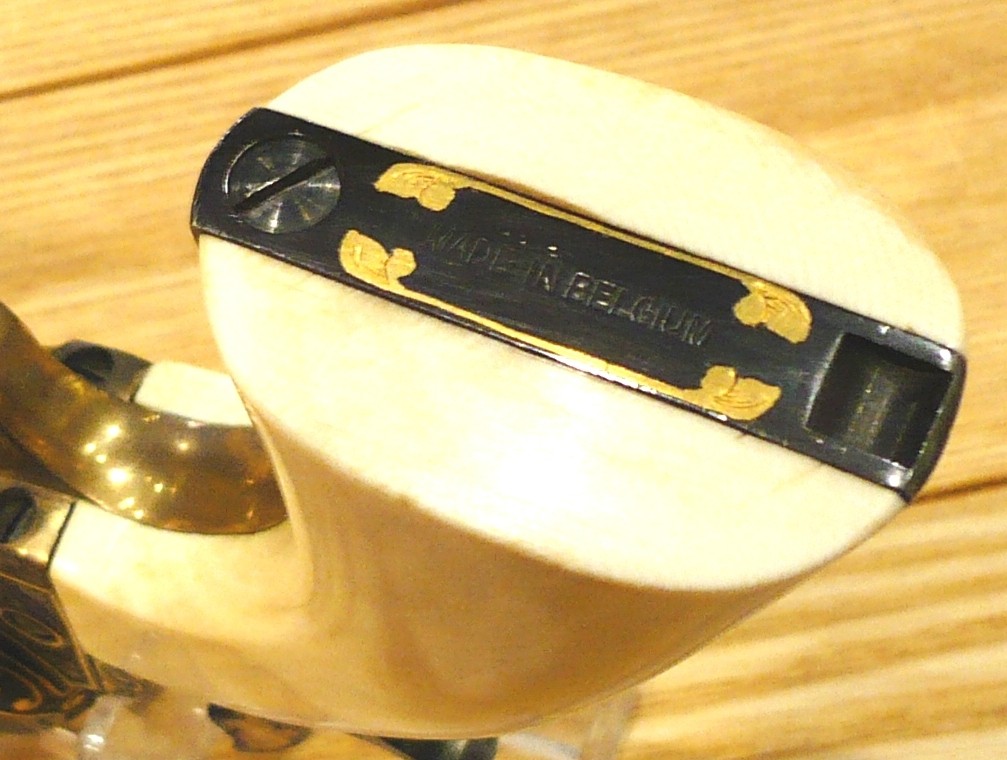
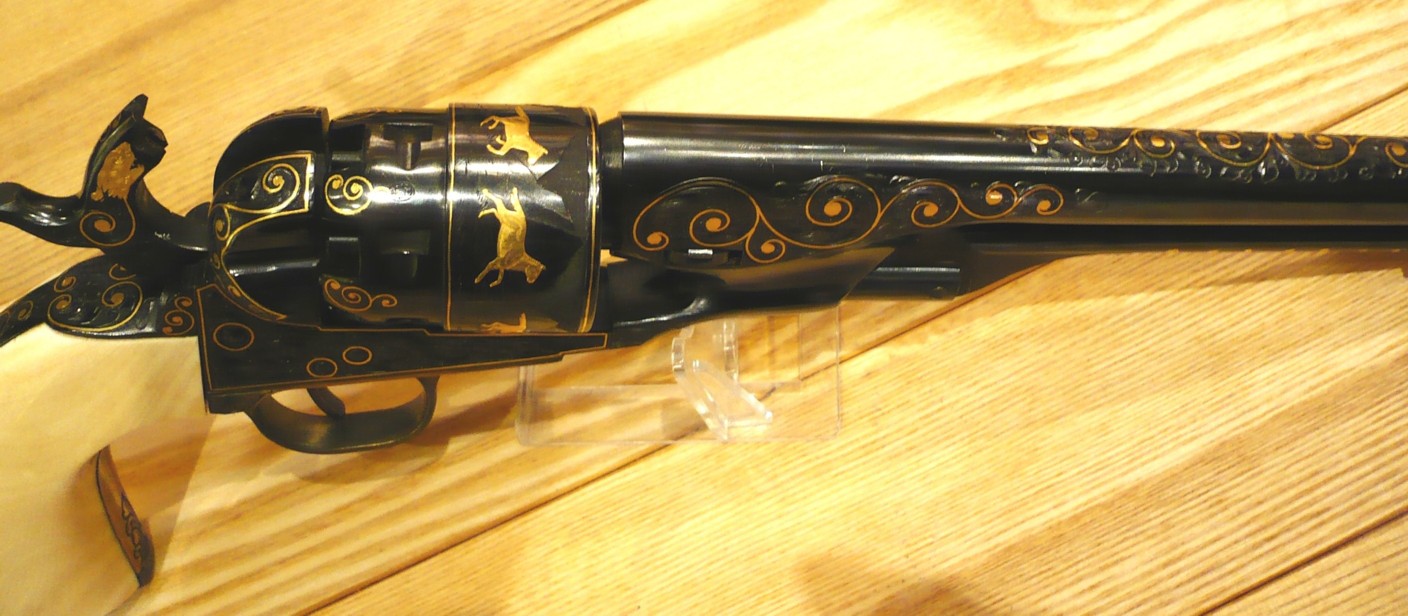
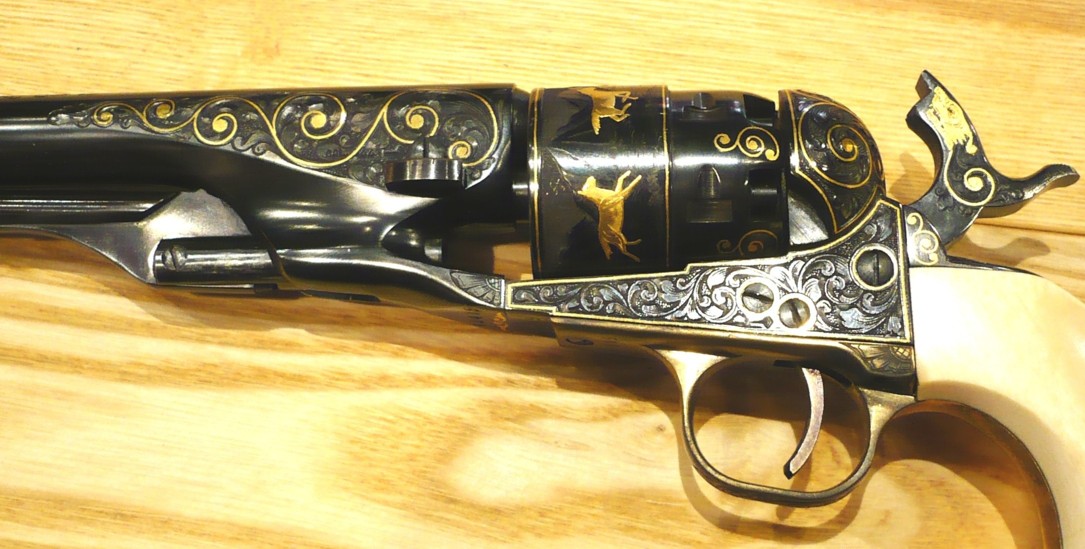
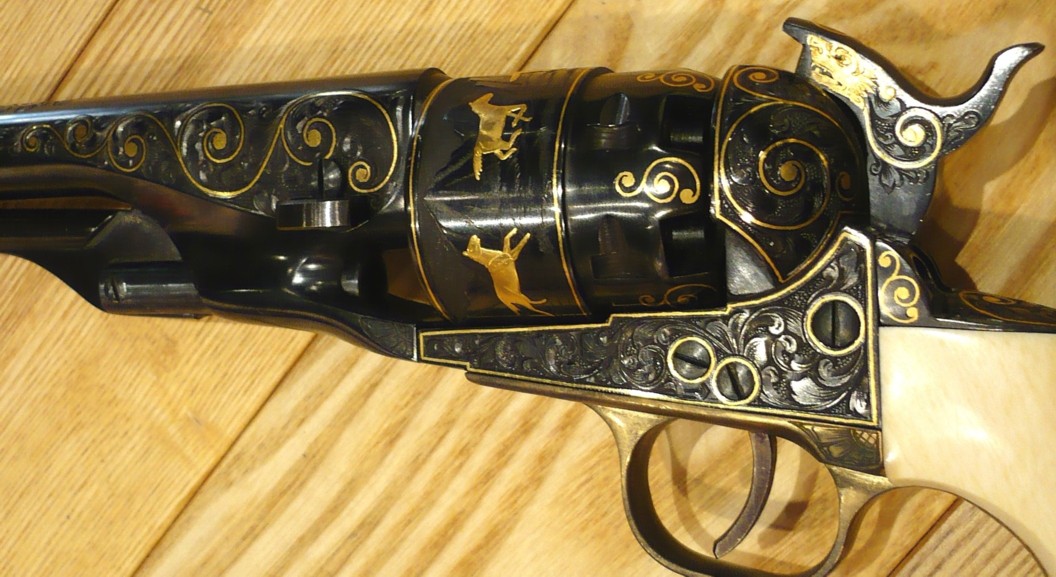
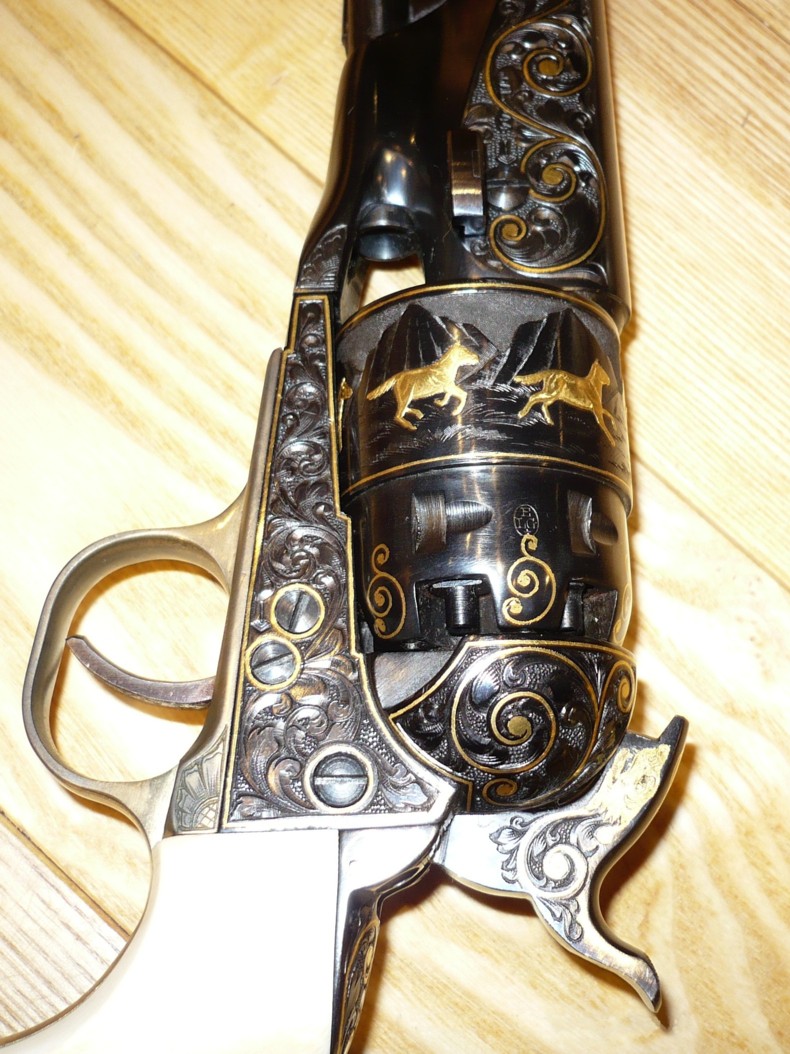
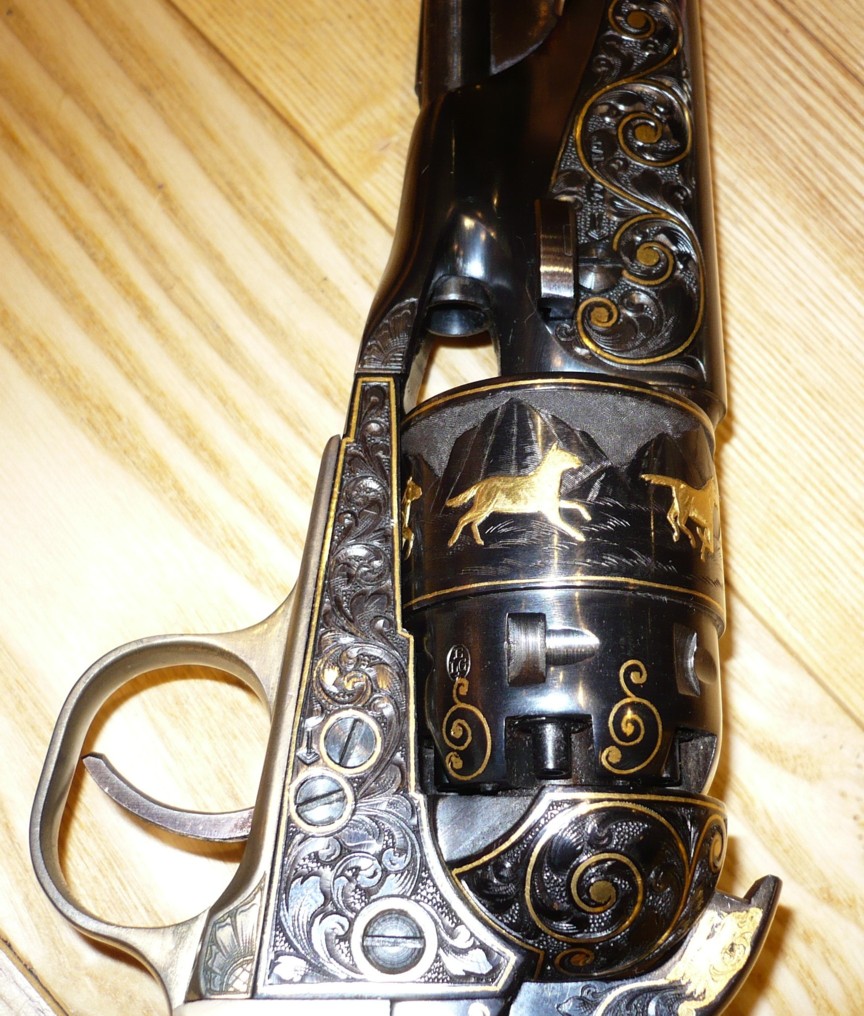
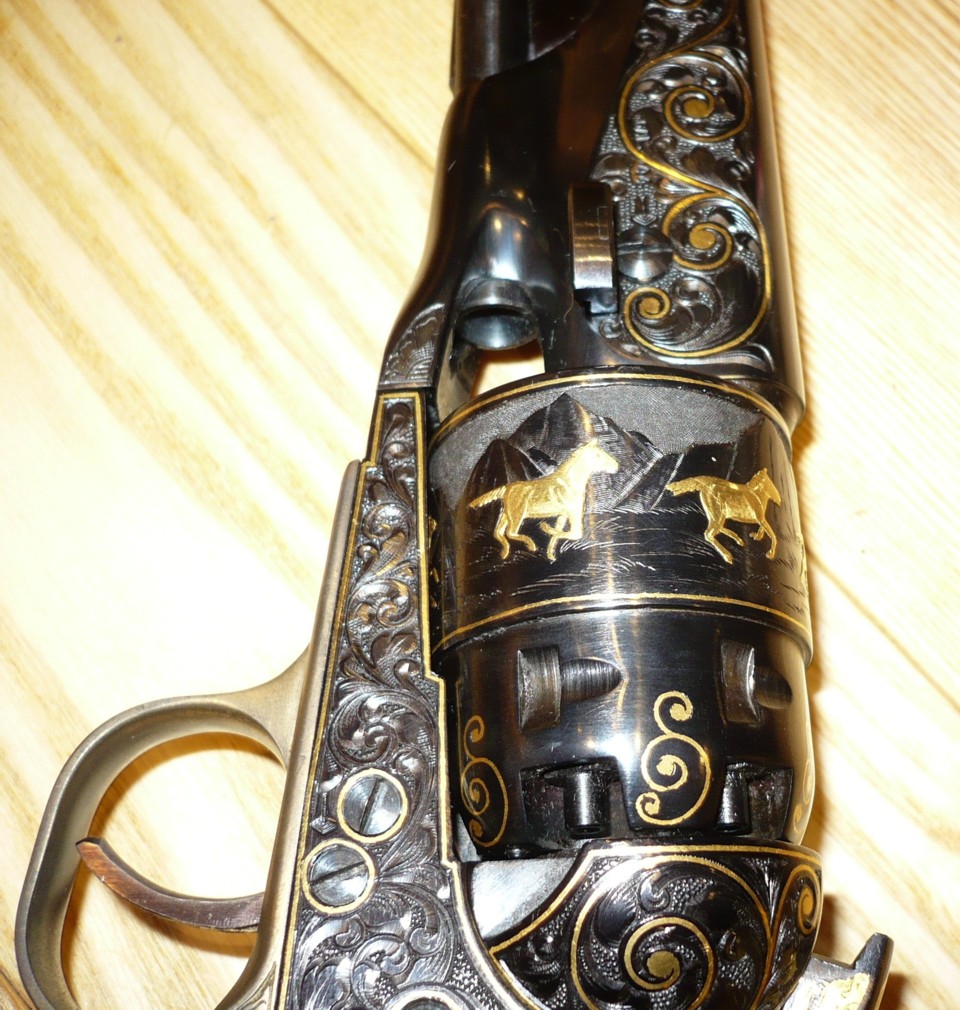

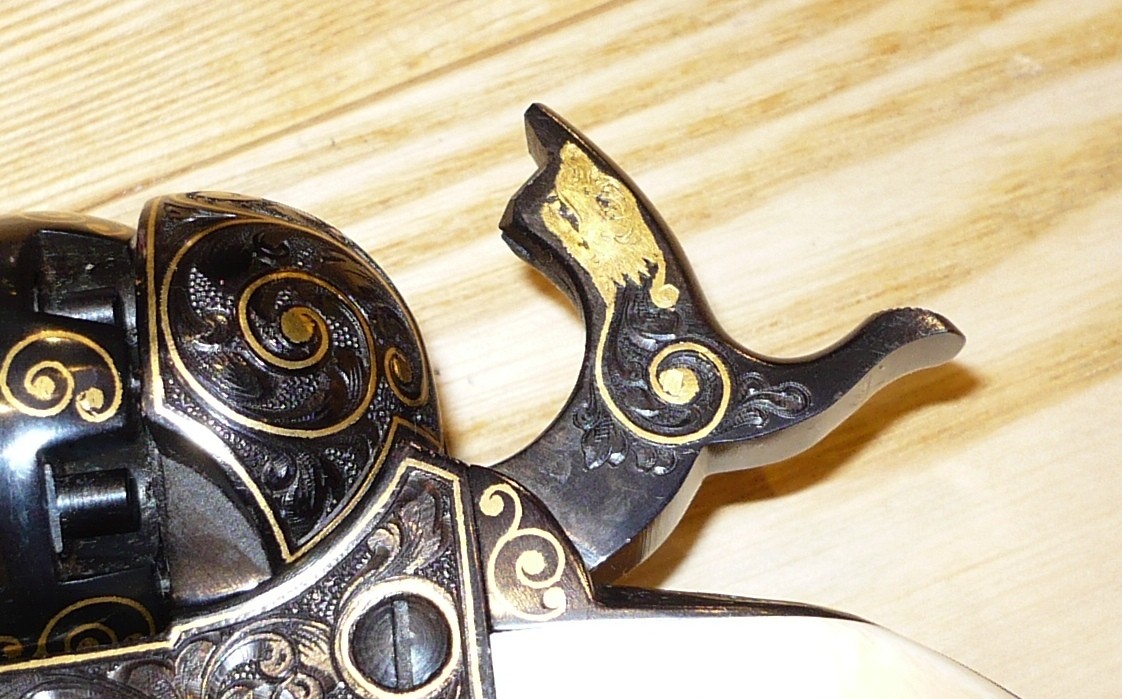


Fabrique d’Armes Unies de Liège
Here is
a very traditional small chromed six shots revolver with folding trigger in
calibre 22L intended probably for export since marked The Liege United Arms C°
Ltd, that is to say the "Fabriques d'Armes Unies de Liège", already abundantly
evoked on the site.
The
trade mark in English was registered on June 1, 1923.
See
also: http://1960nmaorg. startlogic. com/Hanquets/Hanquet-13Aug2013. htm
Markings
22L: the
calibre 22 long
ELG
crowned: acceptance of use between 1893 and 1968
R
crowned: rifled bore, of use between 1894 and 1968
J under
star: countermark of a controller, of use between 1877 and 1968.
GP with the help of HPH.
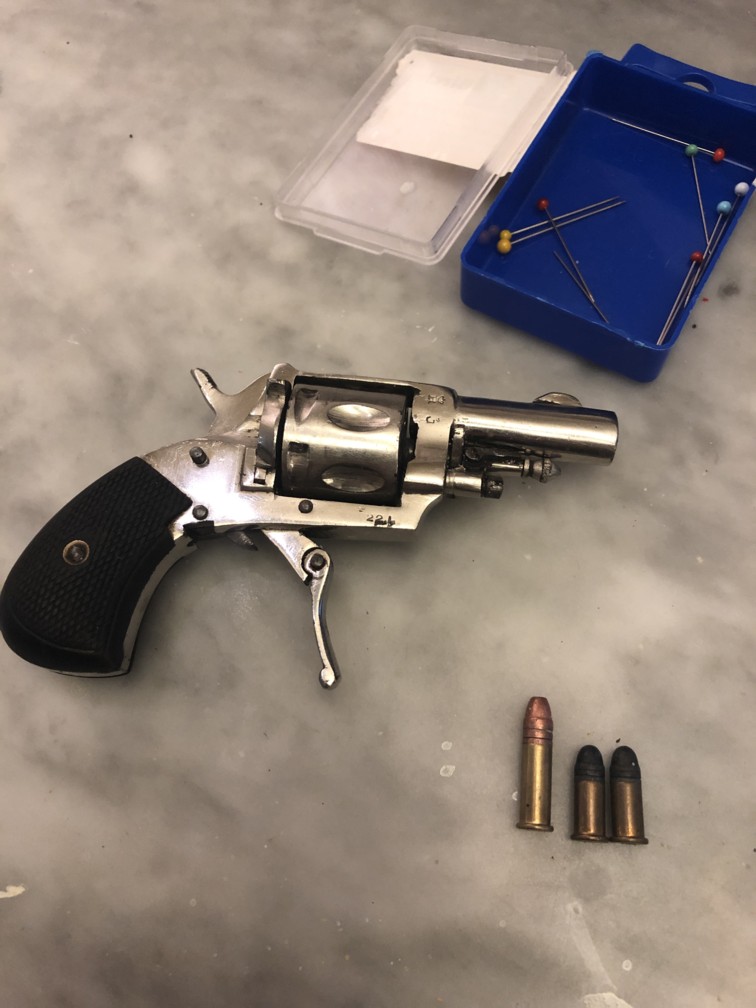

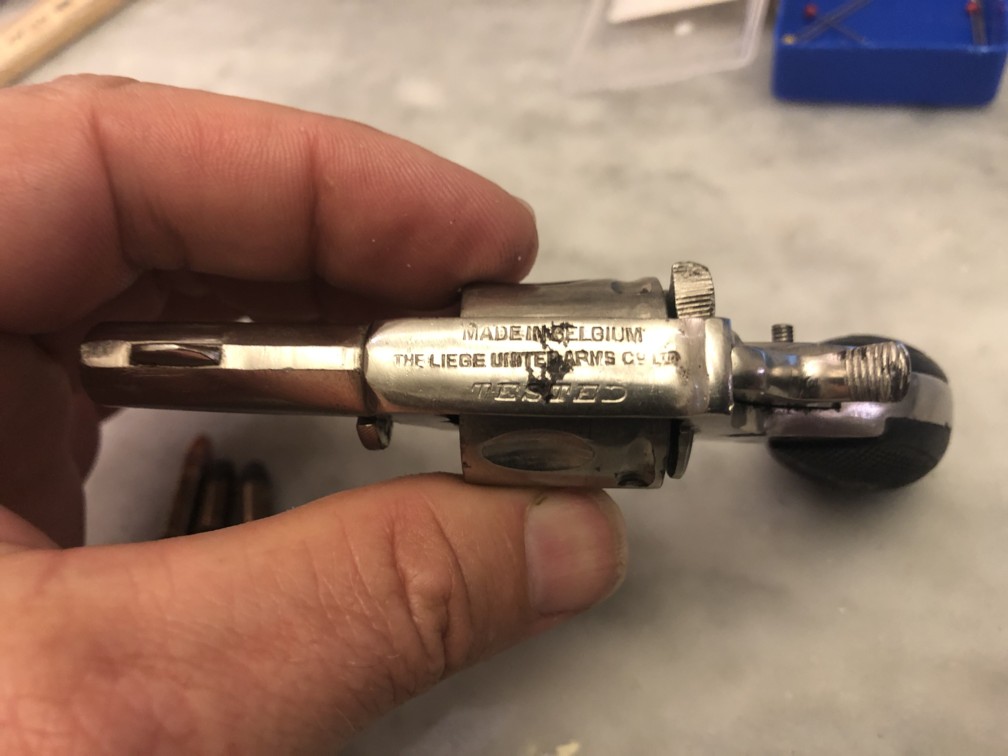

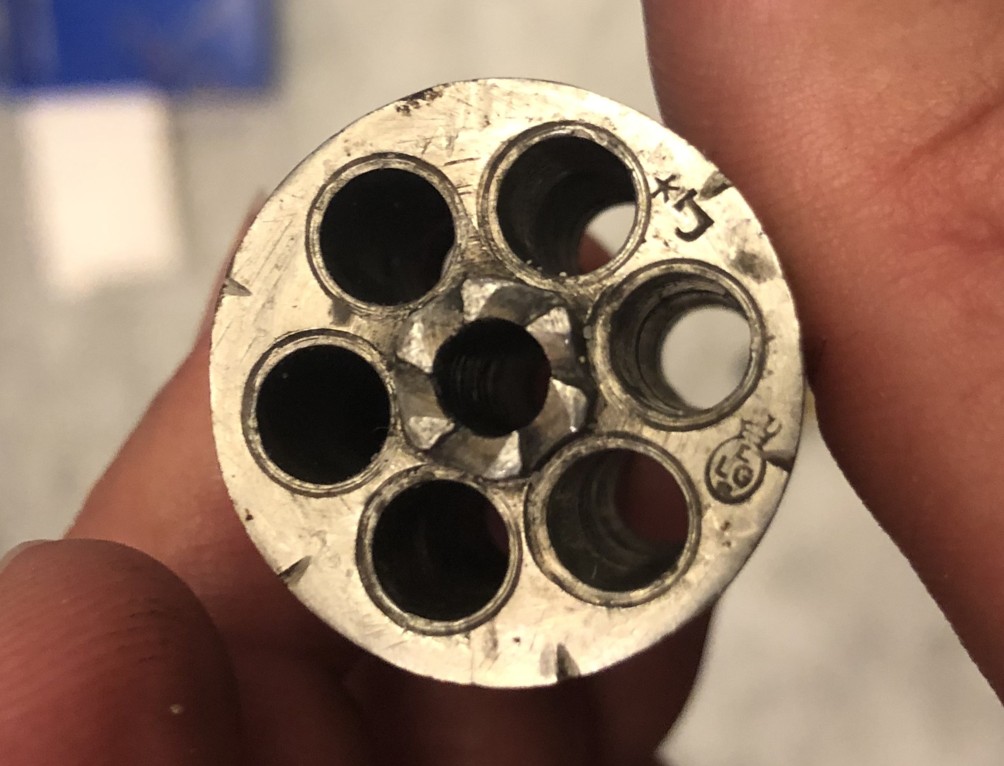
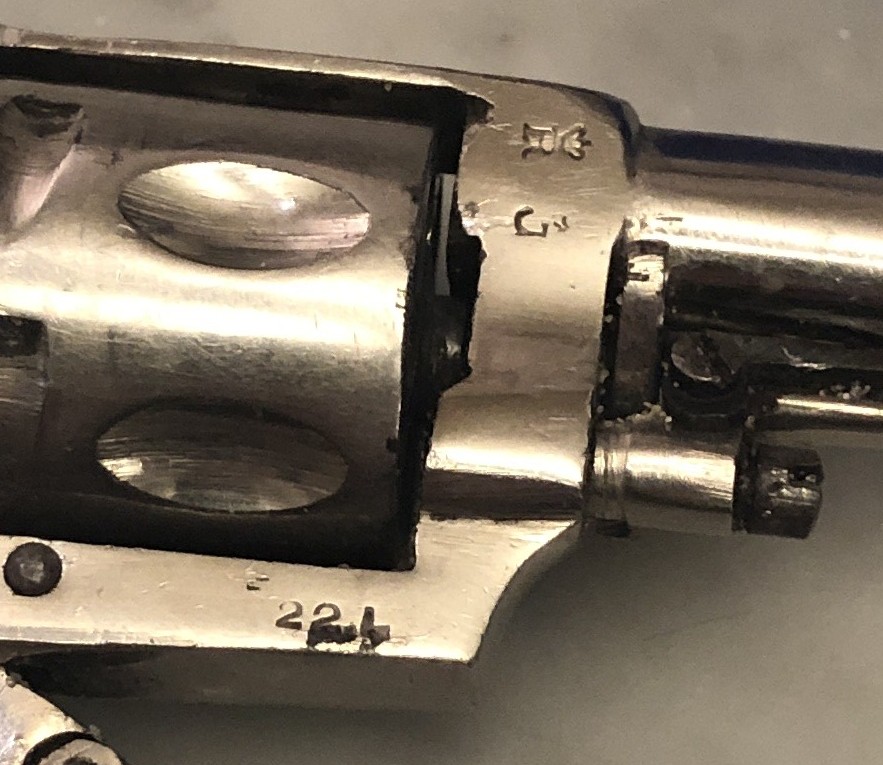
Fabrique d’Armes Unies de Liège
Here is a very traditional shotgun juxtaposed with external hammers, English stock, resulting from the United Arms Factories of Liege.
According to the year letter, a wartime production.....
The markings
16-70 in
an omega: nominal size and length of munition since 1924
ELG on star in crowned oval: acceptance between 1893 1968
Lion on PV: smokeless powder test between 1898 and 1968
Peron:
inspection since 1853
U or V:
annal letter for 1942 or 1943
1kg349:
weight of the barrel that can fire smokeless powders since 1924
Akah: Albrecht Kind GmbH, probably the oldest arms wholesaler in Europe, founded in 1853 by Albrecht Kind in Hünstig, a village about 50 kilometres east of Cologne. The house still exists.
EL: Provisional test since 1852
CHOKE 16. 9: barrel choké in mm to 22 cm of the breech, of use between 1924 and 1968
Y under star: countermark of a controller between 1877 and 1968
The
photo of the inscription on the tape is not very clear but I think I see
"typos": "ARMES" has become "ARMEG"; we should have UNIES, but there are
"hesitations" that I don't see clearly and that I can't explain.
A Monday
morning production?
An act
of "resistance"?
GP with the help of D.Z.
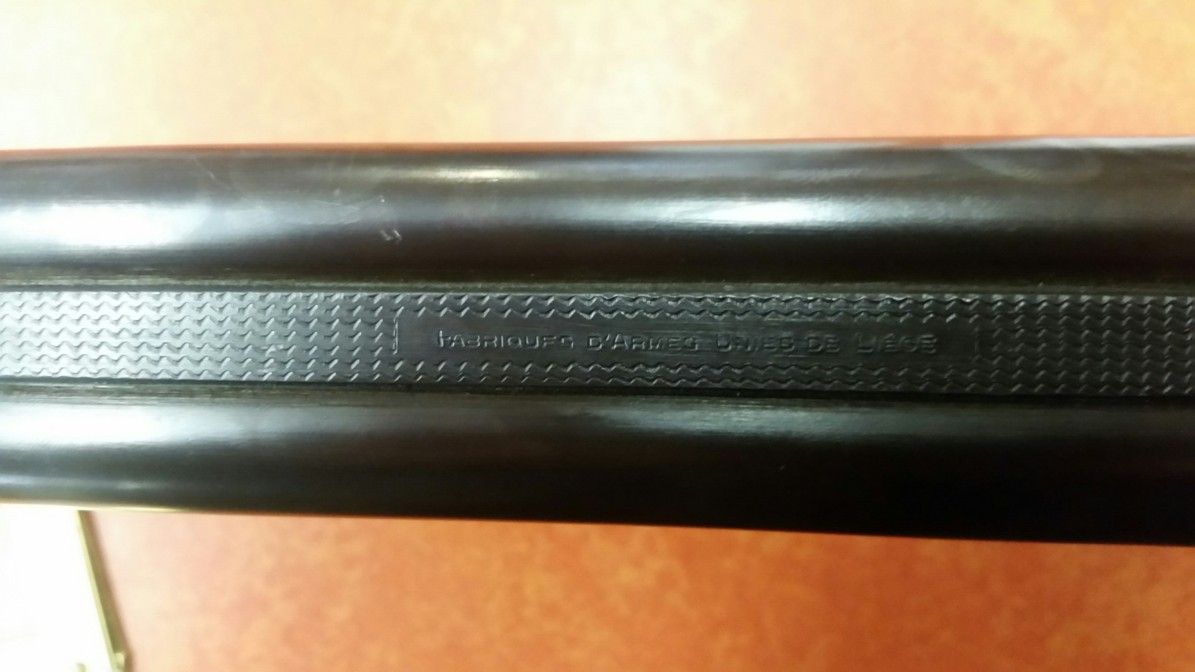
Fabrique d’Armes Unies de LIEGE
Copy of Liège of a flintlock pistol HARPER FERRY model 1805-1808.
Punches
This weapon carries the lawful punches of the proofhouse of LIEGE, namely:
ELG on star in a vertical oval: final acceptance, of use of 1846 to 1893.
Peron: inspection of 1853 to our days
These punches thus reveal a period of manufacture going from 1853 to 1893.
The manufacturer
The barrel is marked F.A.U.L meaning “Fabriques d’armes unies de Liège” whose seat was in Liege, 22 street Trappé.
14, 4: is the gauge corresponding to gauge 28.
17: it should be a question with my direction of a serial number.
/VII: they are markings of “équipors” meaning: /=10 V= 5 - II = 2 is on the whole 17 like above.
Publicity of the firm: see appendix 1.
GG
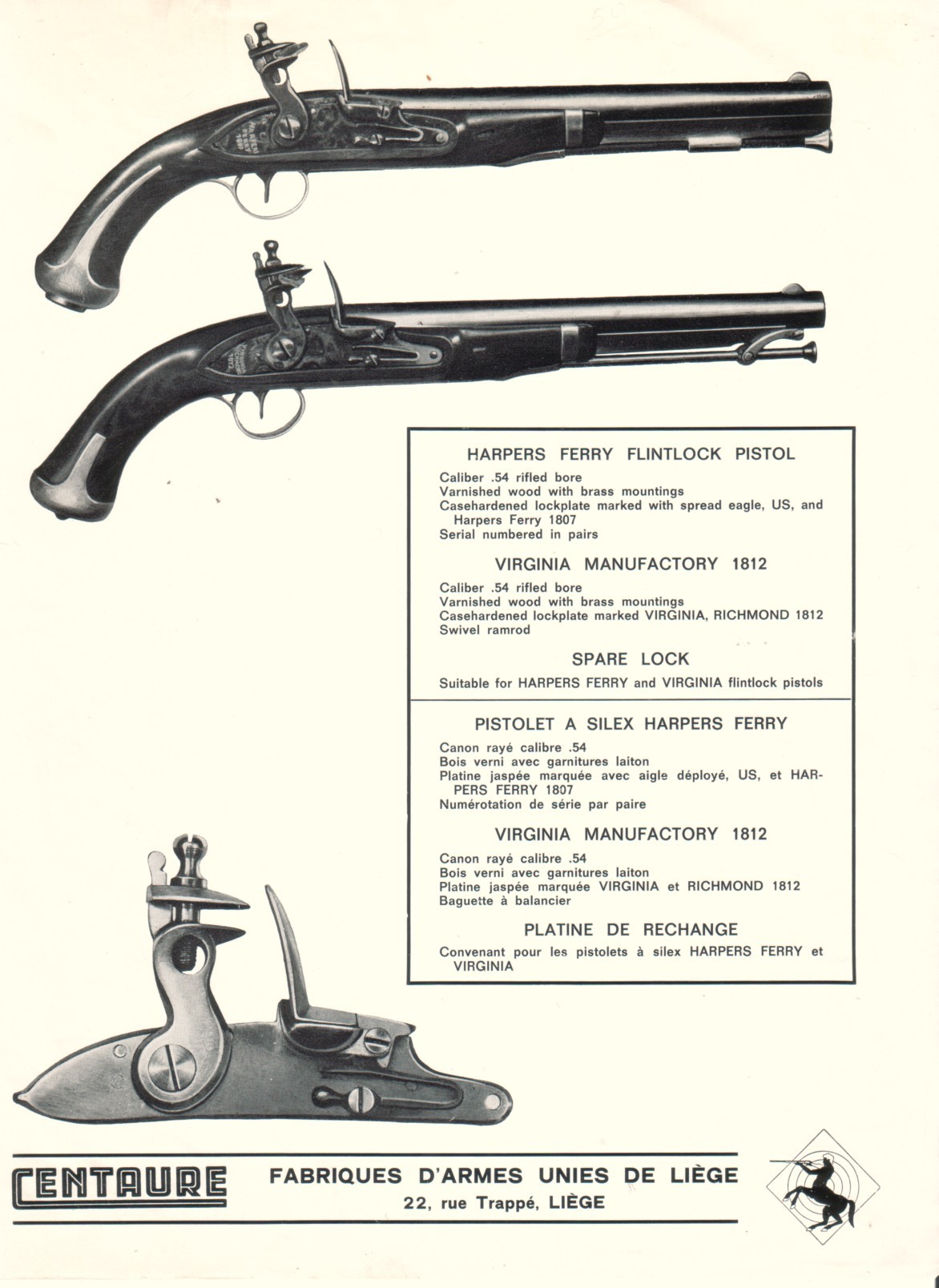
Fabrique d’Armes Unies de LIEGE
Very beautiful counterpart (functional and subjected to authorization) of a pistol with percussion to be charged by the mouth (gauges unknown).
Punches
Letter “S” spangled: countermark of the controller post 27/01/1877.
The S spangled refers to Daenen Charles, controller active of 1952 to 1980 - to see appendix.
Peron: inspection post 16/06/1853.
R crowned (large): Rifled bore - of use of January 30, 1894 to February 26, 1968
Interlaced EL: Provisional, valid test from December 21, 1852 at our days
ELG on star in an oval: final acceptance post 11/07/1893.
For information the ELG on star in an oval NOT CROWN (which could make believe that this weapon is former to 1893) is the exception for the weapons to charge by the mouth (blasting powder) and is always valid for this type of weapon.
The manufacturer
Manufactured by Centaur in Liege (F.A.U.L. - Hanquet) (but it should there y have had their logo – non apparent on the photographs) in years 60/70. See illustration below
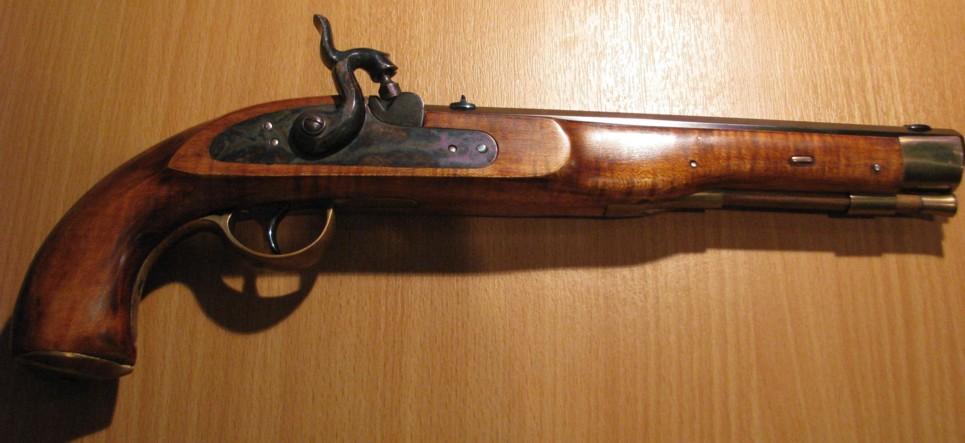
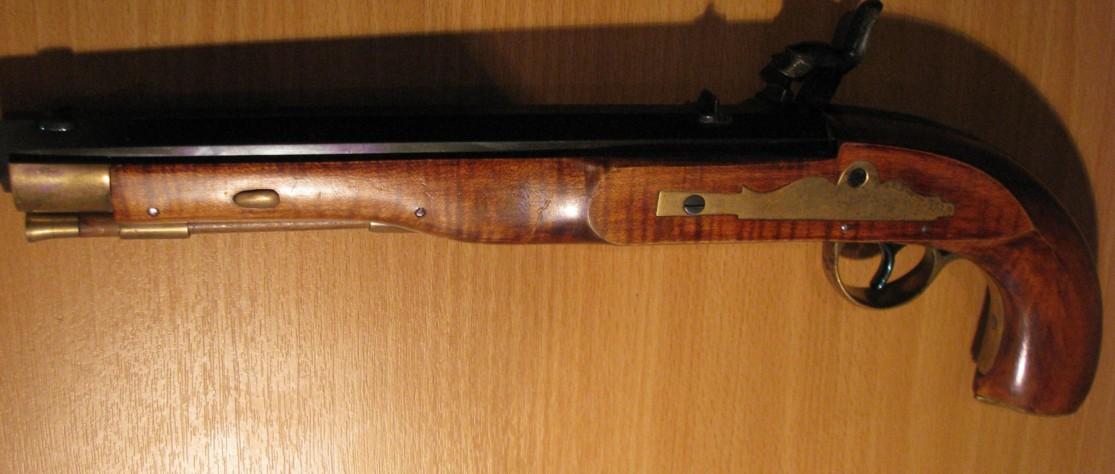
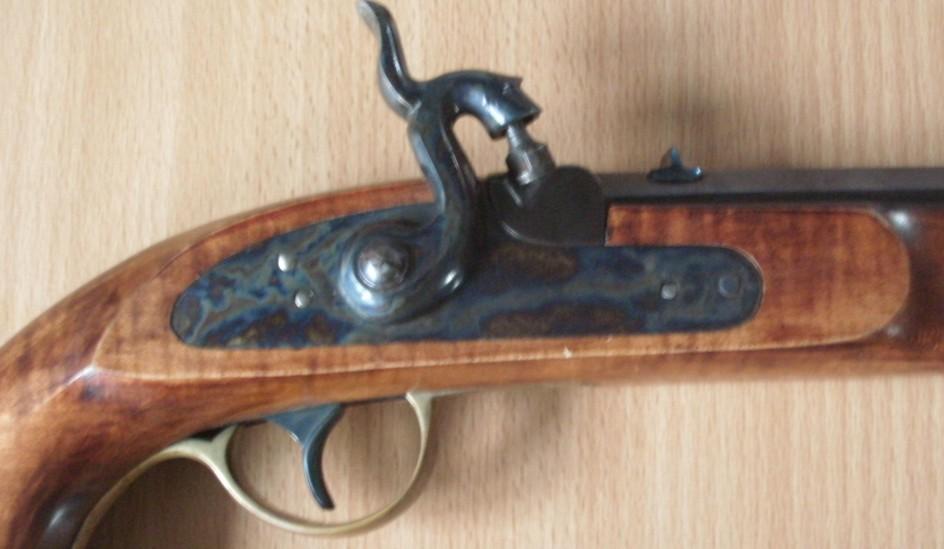
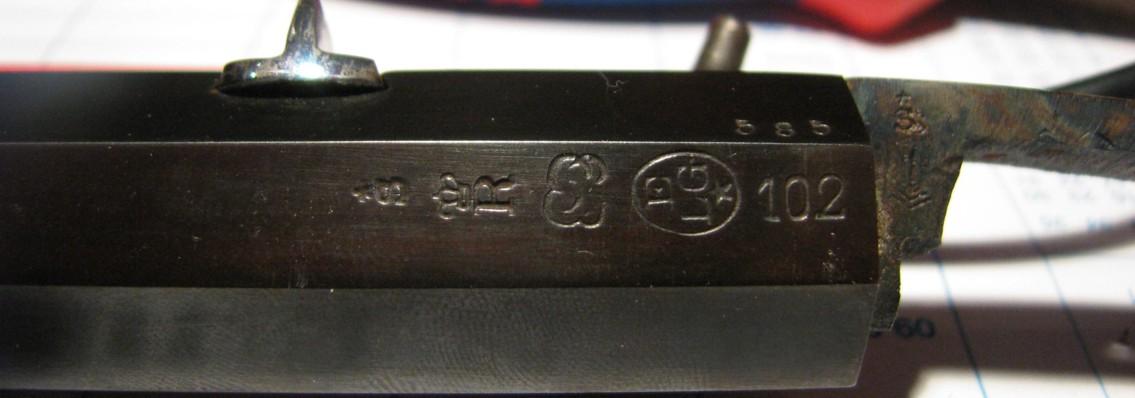
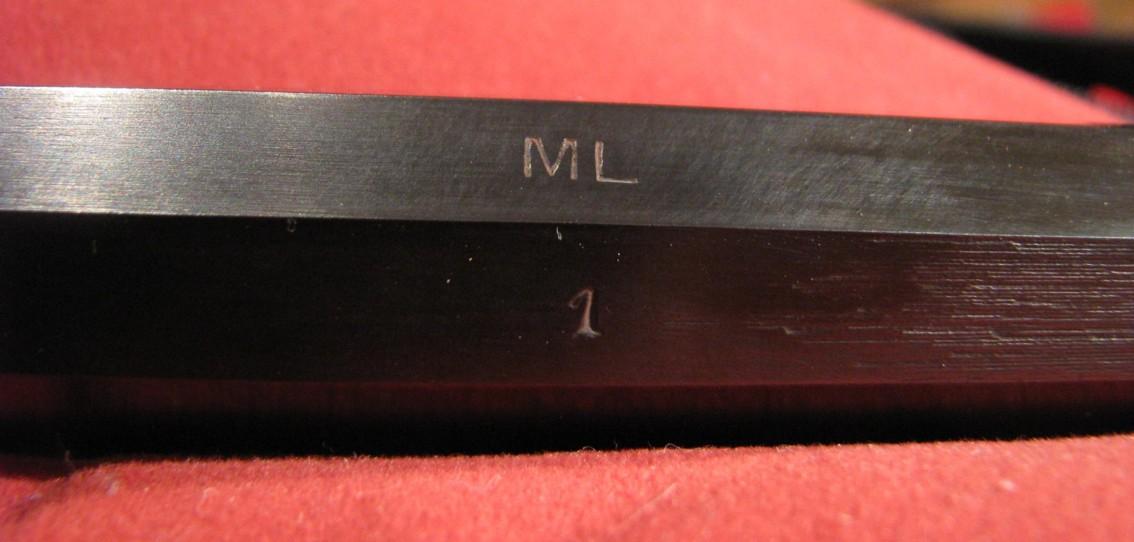

Fabrique d’Armes Unies de LIEGE
Double shotgun to percussion and loading by the mouth of modern manufacture (2nd half of the XXe century) produced until 1976 by the firm CENTAURE (Fabrique d’armes unies de Liège) street Trappé, 22.
The steel unrifled bores are juxtaposed, they are maintained with keys.
The rocker is with ahead embedded locks.
The hammers are external.
The stick in walnut is worked “with English”, it comprises a “capsulière” cockles.
Punches
The weapon carries the lawful punches of the bench of tests of Liege, namely:
ELG on star in a vertical oval: acceptance, guns to be charged by the mouth, of use from July 11, 1893 at our days.
EL in English letters: provisional test, of use from December 21, 1852 at our days.
S spangled: countermark of the controller post 1877.
16.2: gauge in mm (corresponding + - to gauge 20). In use of 1889 to our days.
Marks
CENTAURE LIEGE BELGIUM: mark deposited by the “Fabrique d’armes unies de Liège” from LIEGE street Trappé, 22, registered with the proofhouse of Liege since 1920.
It manufactured counterparts of old weapons until 1976 and the sale continued until 1992.
598: sertial number.
Appendix: a page of a catalogue CENTAURE showing a weapon in the same style.
GG
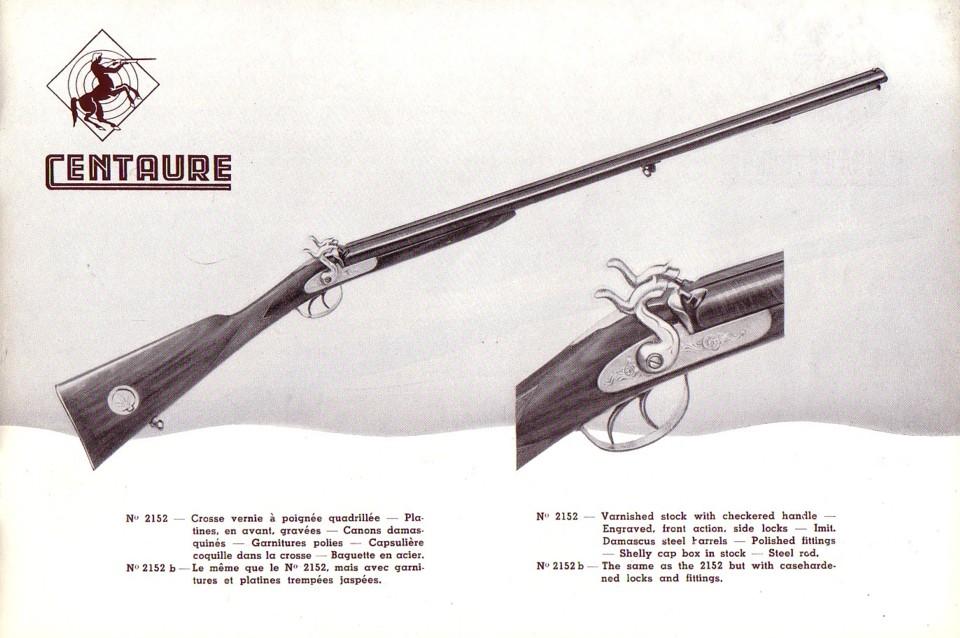
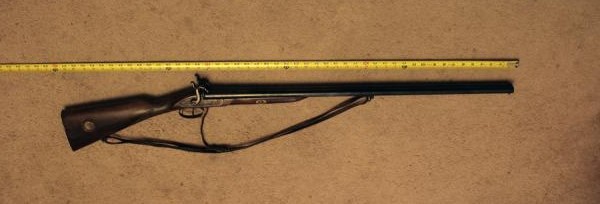
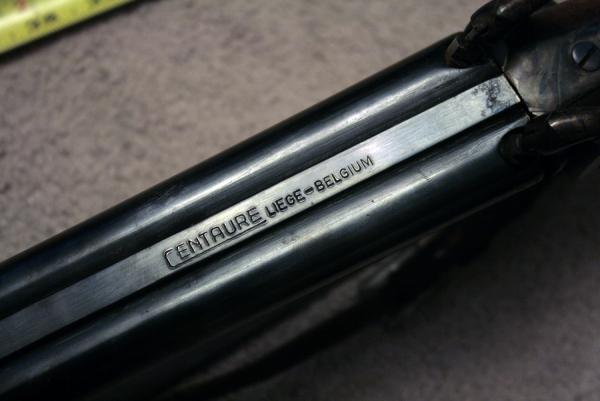
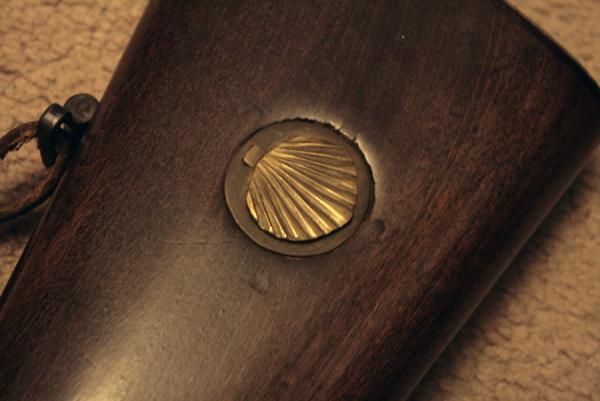
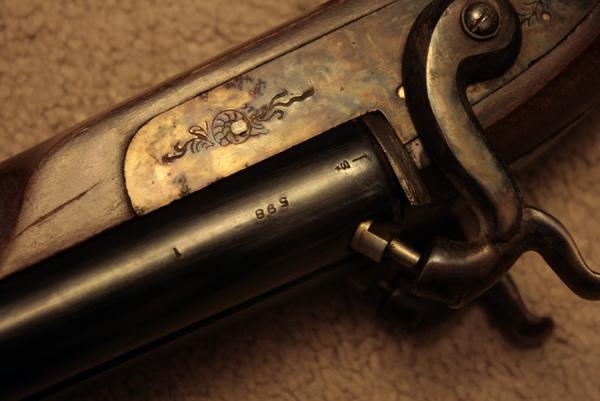
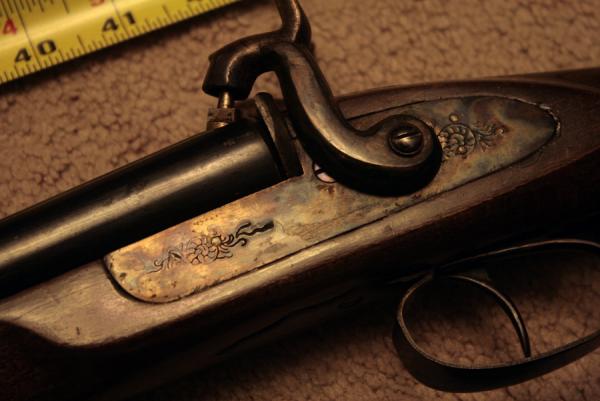
Fabriques d’Armes Unies de Liège
Ce fusil double en calibre 16 est un classique fusil de chasse à canons lisses et juxtaposés
La platine à percussion centrale est à chien extérieurs et la clé entre ces chiens « top lever ».
Les canons en acier éprouvés sont frappés d’un aigle aux ailes déployées mais que je n’ai pu identifier avec certitude car il n’est pas visible complètement. Or plusieurs fabricants de canons de fusils comme CAP Joseph et LOCHET Arnold ont utilisés ce logo avec de petites variantes.
La bande reliant le canon porte en or incrusté la mention "Pour poudre blanche" ce qui indique bien sur que l’arme est éprouvée à la poudre sans fumée par opposition à la poudre noire.
La crosse à l’anglaise est en noyer et la longuesse à poussoir.
La platine porte une gravure florale à l’anglaise également.
L’arme a subit l’épreuve liégeoise comme en attestent les poinçons relevés, soit :
ELG étoilé dans un ovale couronné : acceptation post 1893.
S et T étoilés : contremarques des contrôleurs post 1877.
PV surmonté d’un lion stylisé : épreuve à la poudre sans fumée, en usage de 1898 à 1968.
16 C dans un losange : calibre, en usage de 1898 à 1924.
Perron : inspection post 1853.
P1K668.6 : poids du canon pouvant tirer des poudres sans fumée (armes lisses) En usage de 1892 à 1924.
D = 65/18.9 m/m : longueur de la chambre en mm et diamètre en mm après épreuve facultative à la poudre sans fumée. En usage de 1892 à 1924.
L’arme aurait donc été fabriquée entre 1898 et 1924.
La marque DICTATOR a été déposée par les Fabriques d’Armes Unies à Liège (F.A.U.L) rue Trappé 22 (voir site)
GG

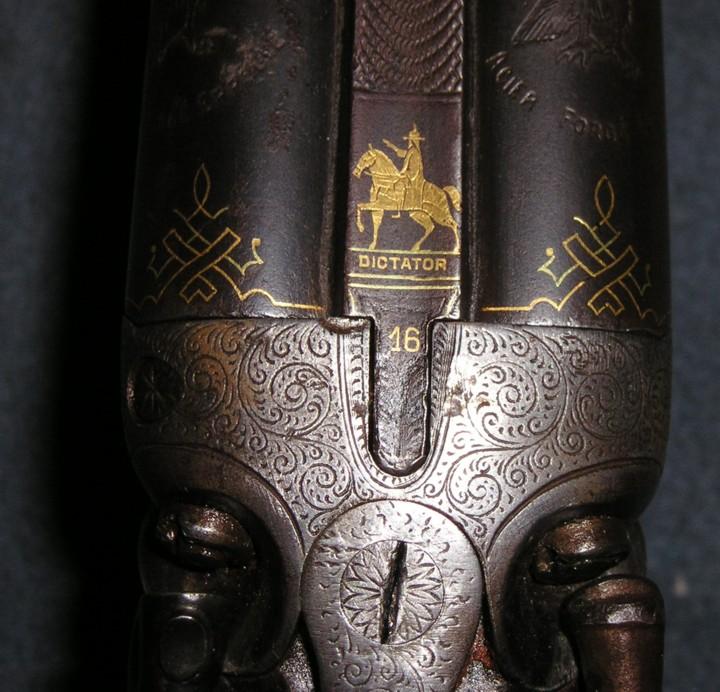
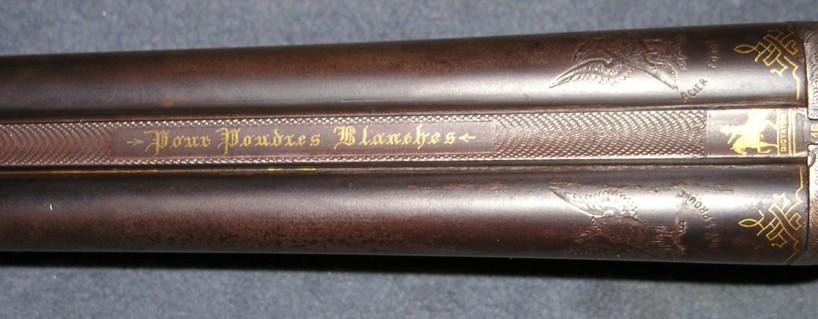
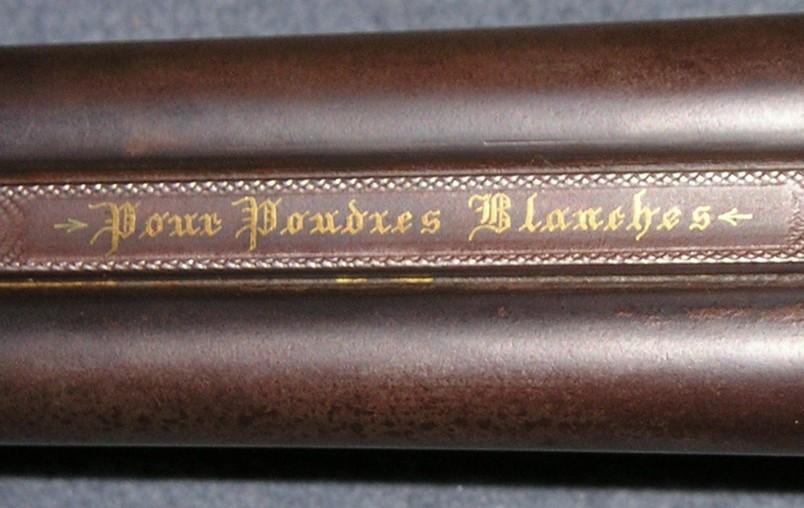
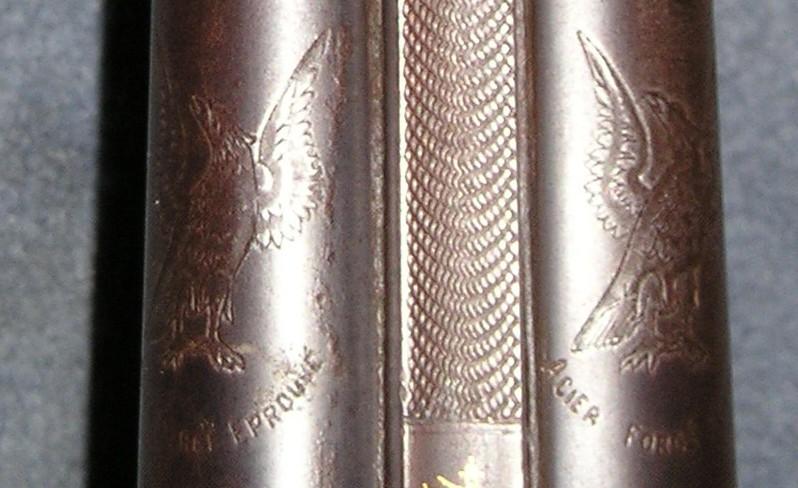
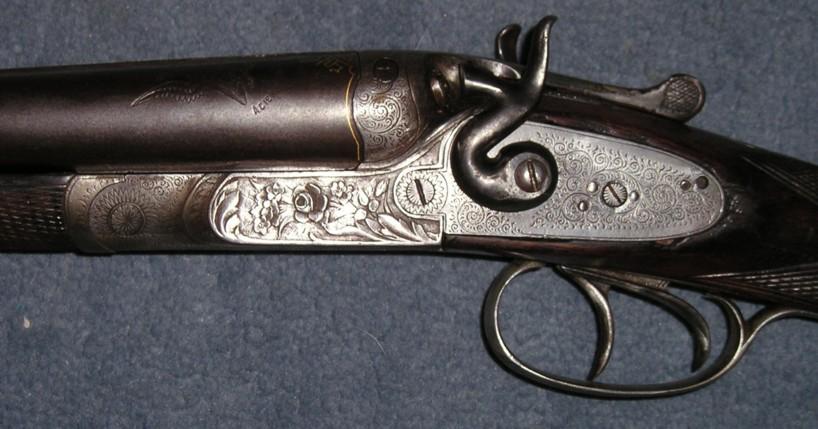
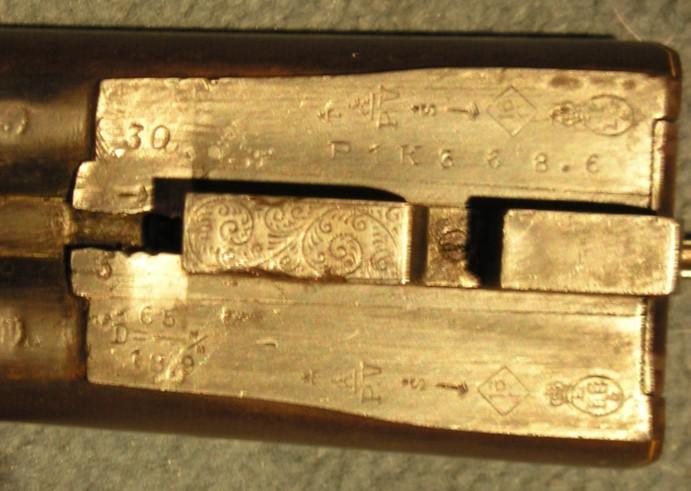
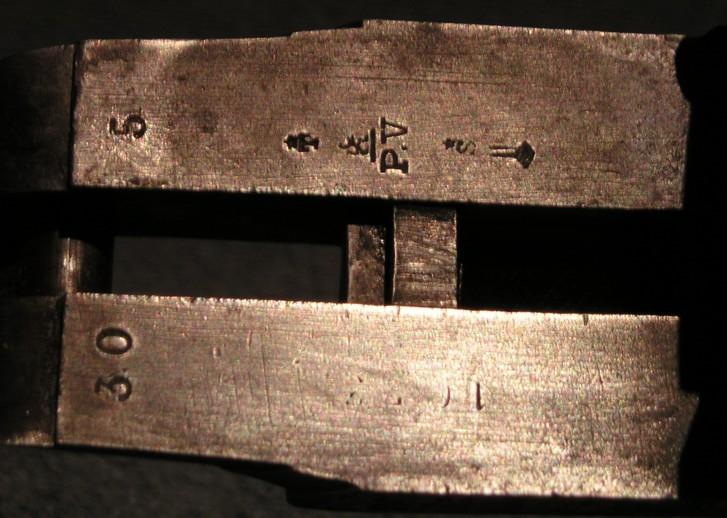
Fabriques d’Armes Unies de Liège
Limited company.
Manufacture of weapons.
Rue St-Gilles, 87 Liège (Ann.1924)
Rue Trappé, 22 Liège (Ann.tél.1949) (Ann.1959)
Partnership between (in 1920) 3 large companies :
- Fabriques d’Armes réunies (anciennes maisons Albert Simonis, Antoine Bertrand & fils, Pirlot & Frésart)
- Fabrique d’Armes de Liège (J.Ancion & fils, Joseph Tolet & Cie, s.a. Fabrication des Armes à feu)
- Ferdinand Hanquet
Manufactured:
Le Centaure (other name of the Dictator)
Cow boy ranger ( style western)
Dictator
Texas ranger
Clement 1909 (contesté)
Clement Fulgor(Basé sur le Browning 1903)
Constabulary
Extracteur
Milady
|
FABRIQUES D'ARMES UNIES DE LIEGE Date of issue: 1949 Part Sociale No 389. Formed originally in 1919 by amalgamation of 3 large Liège arms manufacturers, Fabriques d'Armes réunies, Fabrique d'Armes de Liège, and Ferdinand Hanquet. A major product was the 'Hammerless' rifle.
|
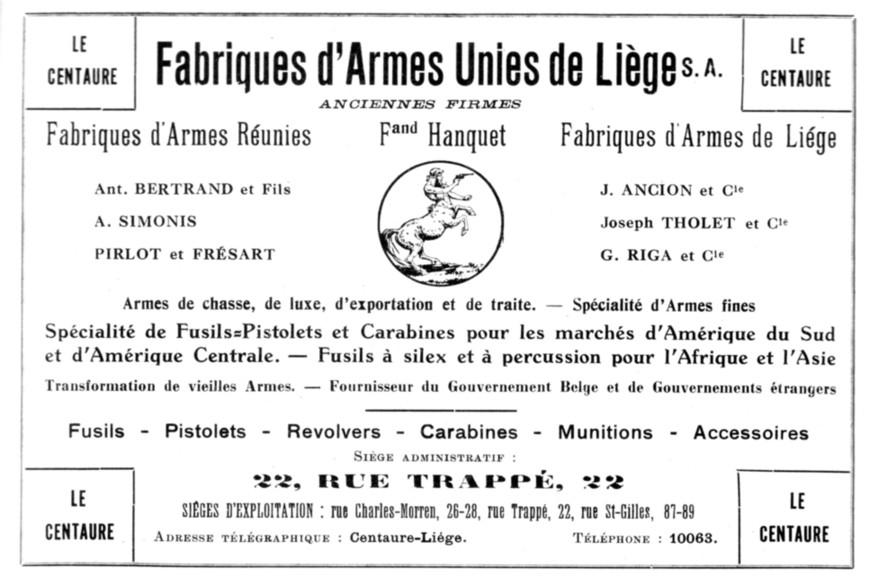
Fabriques d’Armes Unies à Liège
Shotgun to unrifled bores and juxtaposed gauges 12 of them, it lock is of hammerless type to key top lever and the stock of pistol type.
Small d underlined: letter annal 1965
Small d underlined: letter annal 1968. I am not differently explained these two yearly letters than by a replacement of barrel or a visit with the late test??
The manufacturer
F.A.U.L: mark of Fabriques d’Armes Unies à Liège street Trappé, 22 in Liege.
JF marks of Jean FALLA street New Bonne 35 in Liege, manufacturer of barrels (see site).
Made in Belgium: no comment.
GG

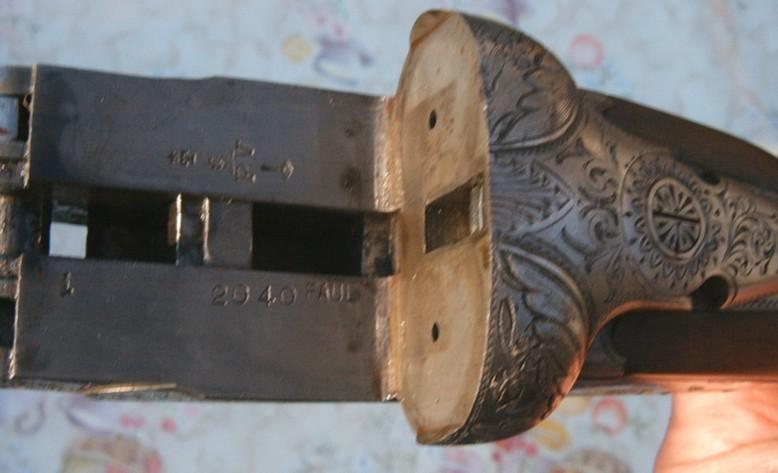
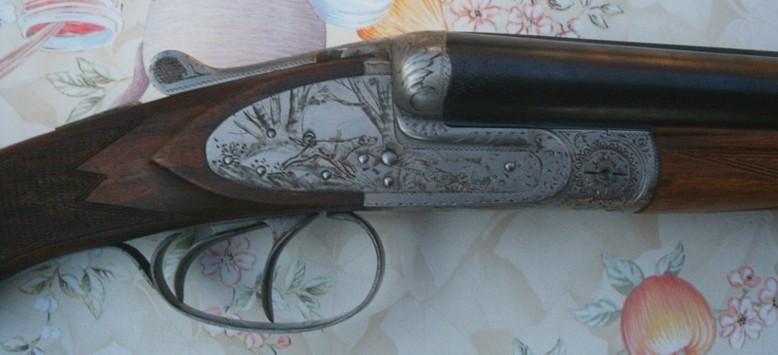

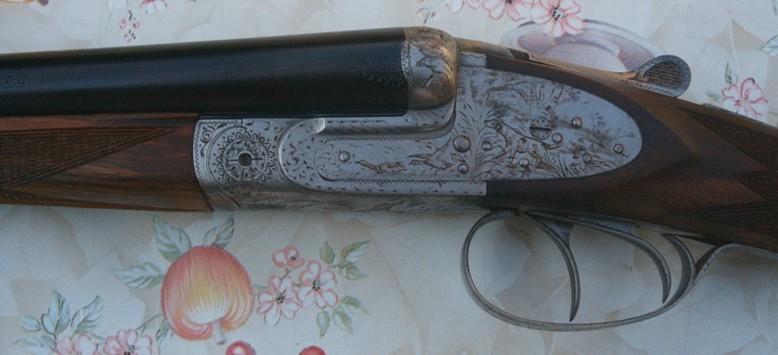
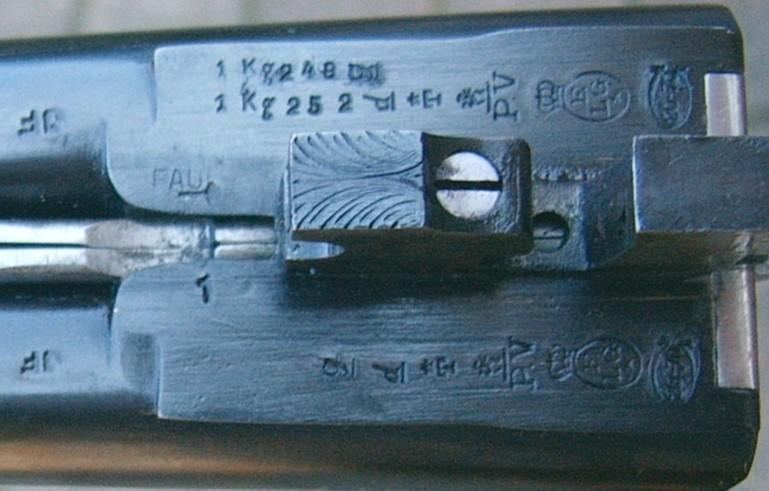
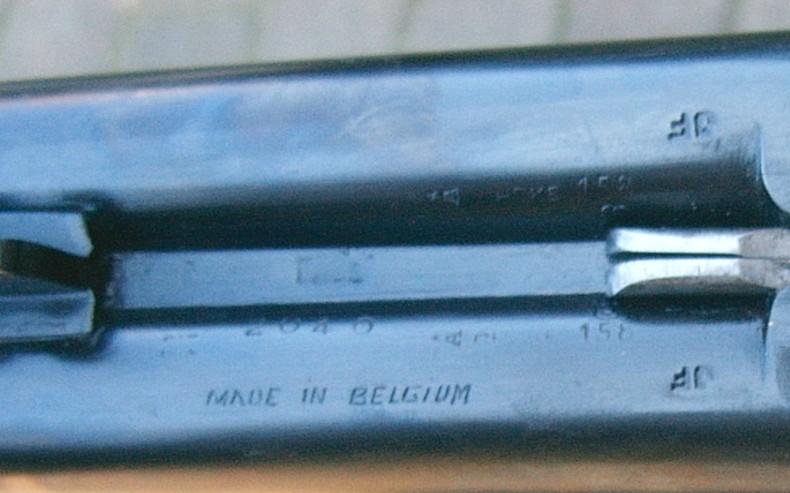
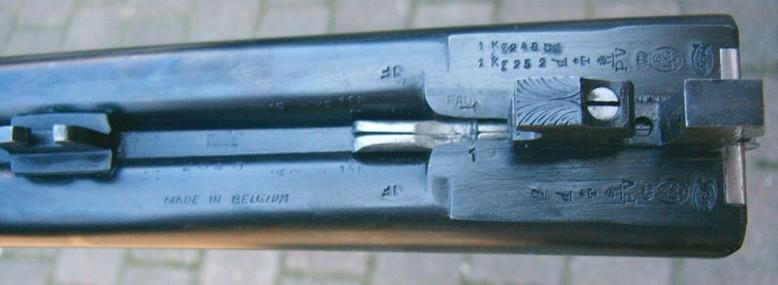
Fabrique d’Armes Unies de Liège SA.
Le Centaure


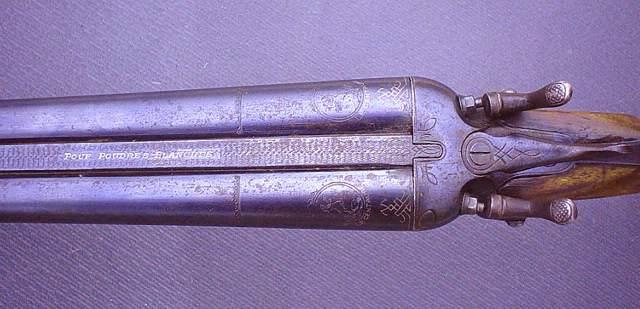
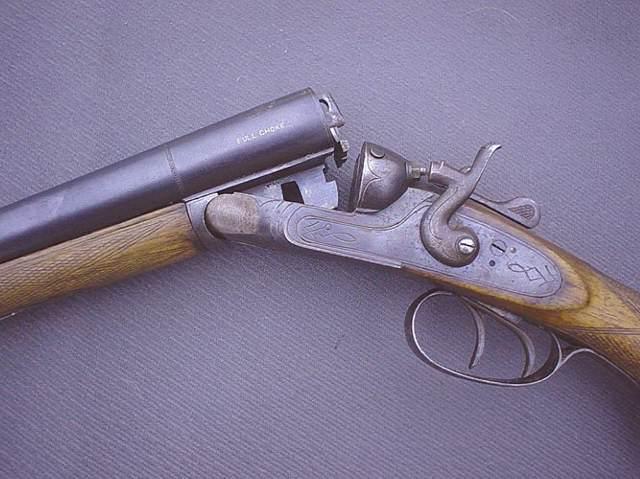
Fabrique d’Armes Unies de Liège SA.
Centaure hammerless.
Catalogue page:

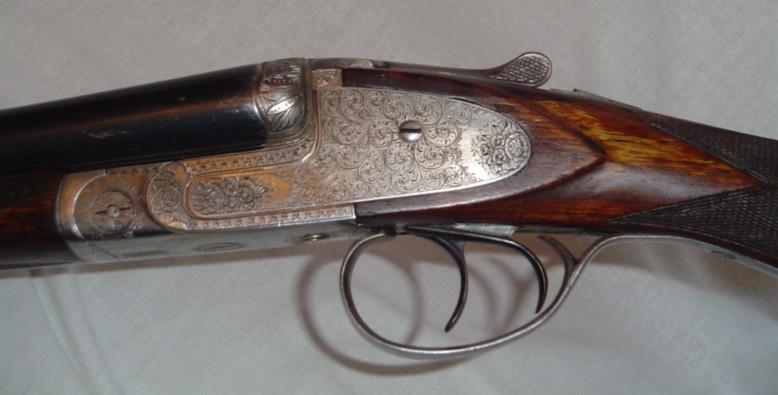
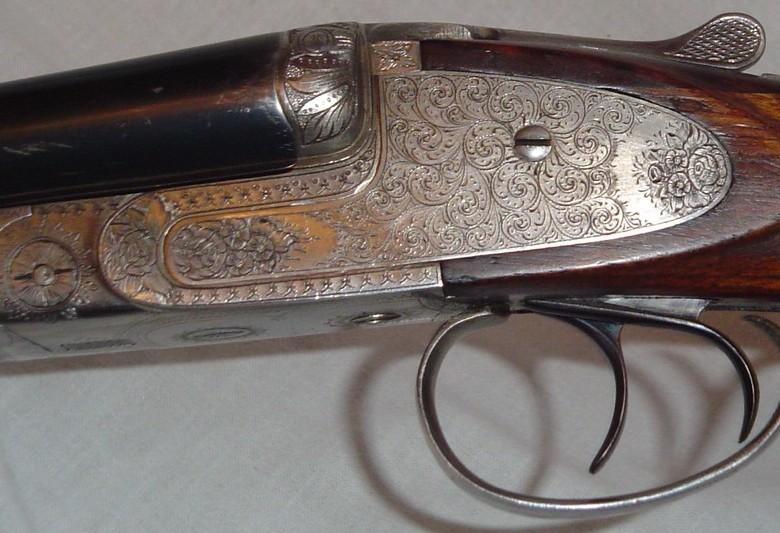


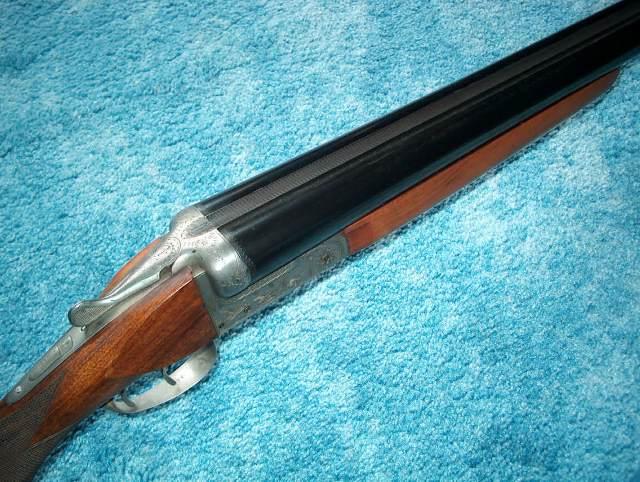
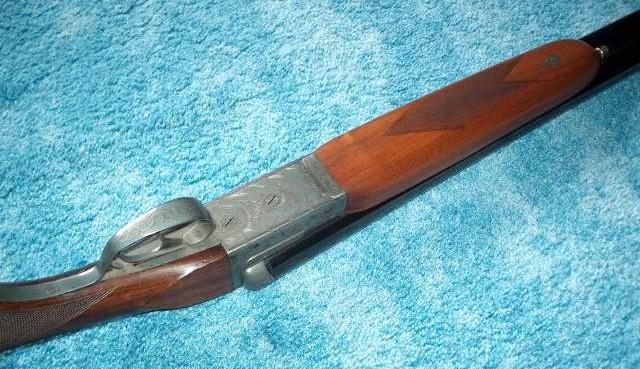

Fabrique d’Armes Unies de Liège SA.
Shotgun to juxtaposed unrifled bores gauges of it 12, lock hammerless, top key and “longuess” with push-button.
It carries the punches of the bench of tests following:
Spangled ELG in a crowned oval: acceptance, of use of 1893 to 1968.
Peron: inspection, of use of 1853 until todays.
R spangled: countermark of the controller, of use of 1877 to 1968.
PV surmounted of a stylized lion: test with the powder without smoke, of use of 1898 to 1968.
FC or AV spangled: countermark of the controller, of use of 1877 to 1968.
12-70 inside large C: gauge nominal and length of the casing, of use of 1924 until todays.
Small letter D: yearly letter (1925)
1Kg 529: weight of the gun which can draw from the powders without smoke (weapons smooth) except for the gram. In use of 1924 until todays.
It also carries following markings of the manufacturer:
TESTED FOR SMOKELESS POWDER: without comment.
THE LIEGE UNITED ARMS C° LTD: Mark of the "Fabrique d’Armes Unies de Liège SA" street Trappé, 22 in Liege. Mark deposited the 01.06.1923.
GG
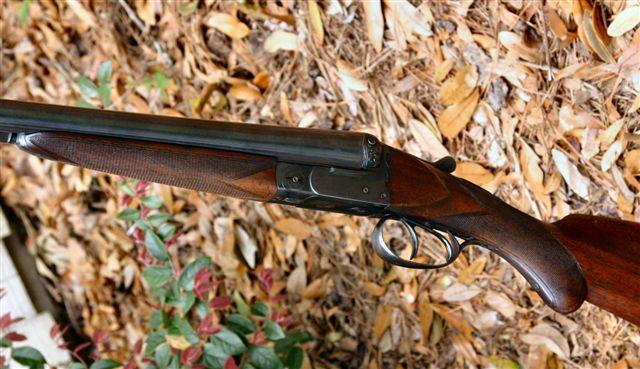
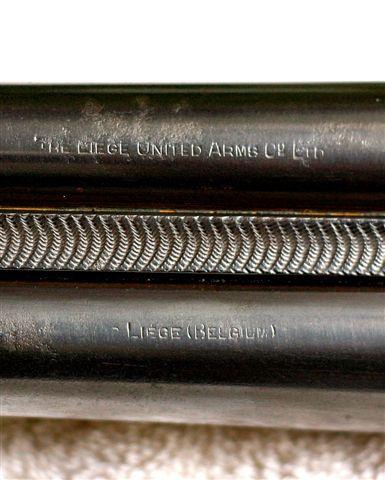
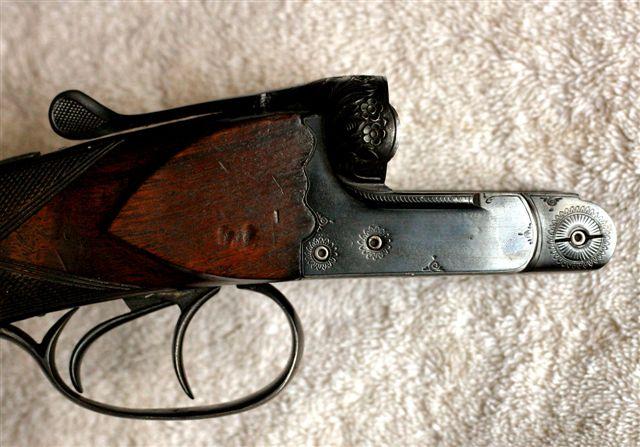

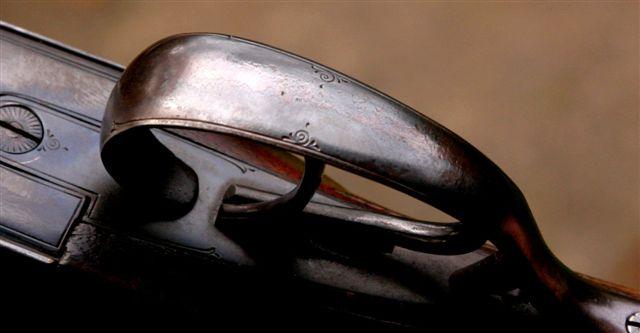
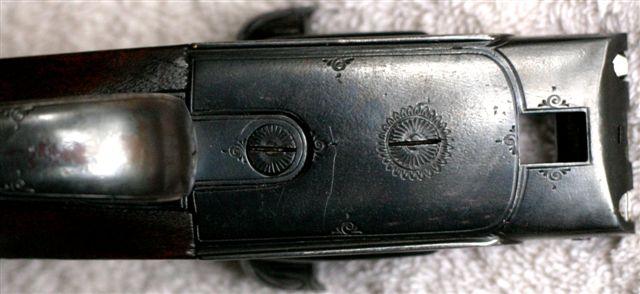

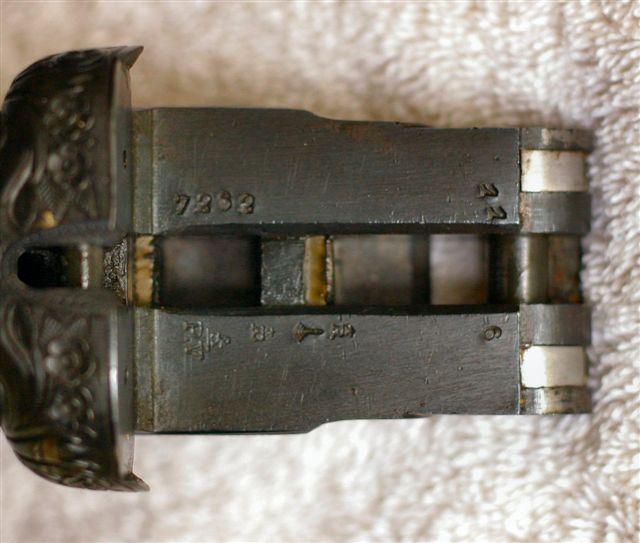
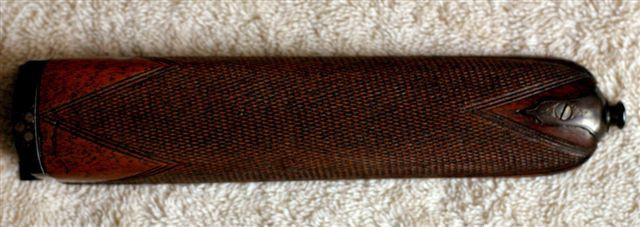
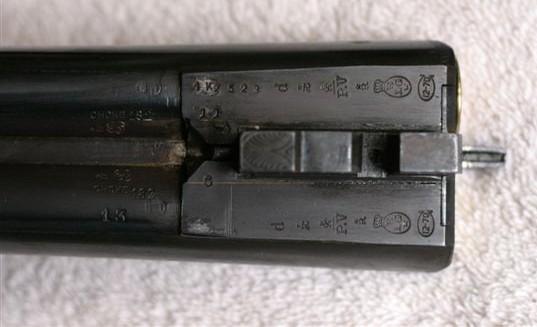

Fabriques d’Armes Unies de Liège
It acts of a weapon of hunting hammerless, gauges 12, with two juxtaposed guns and key Top Lever.
Manufacturer
THE LIEGE UNITED ARMS C° Ltd Liege Belgium: it acts of a trade mark the 01.06.1923 by the Fabrique d’armes unies de Liège (F.A.U.L.) street Trappé, 22 in Liege.
D crowned should be the mark of the manufacturer of guns DELCOUR-DUPONT Jean, trade mark the 06.06.1921.
The bench of test of Liege
The passage the all weapon proof made in Belgium is obligatory since the imperial decree of 1810.
The punches present on the weapon can be read like this:
ELG in a crowned oval: acceptance, punch used of the 11.07.1893 with before the 26.02.1968.
PV surmounted of a stylized lion: test with the powder without smoke, punch used of the 04.10.1898 with before the 26.02.1968.
1Kg 527: weight of the gun which can draw from the powders without smoke (weapons smooth) except for the gram, punch used 30.06.1924 until today.
EE in cursive letters: provisional test, punch used of the 21.12.1852 unil today
Perron (little tower): inspection - punch used of the 16.06.1853 until today.
12.70 inside large C: (with reserve because I am not on to have well read the photograph) it acts the nominal gauge of the weapon and the length of the casing. Punch used of the 30.06.1924 until today.
L and C spangled: countermarks of the controllers, punches used of the 27.01.1877 with before the 26.02.1968.
CHOKE 18.2: “chokes” barrels: cal. to 22 cm of the cylinder head, punch used of the 30.06.1924 with before the 26.02.1968.
GG

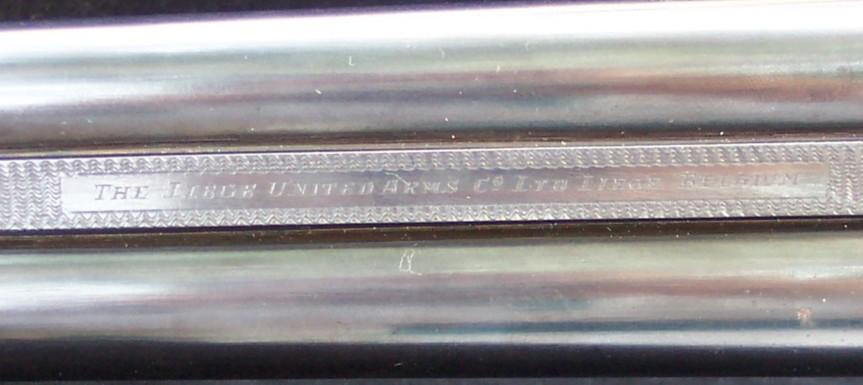

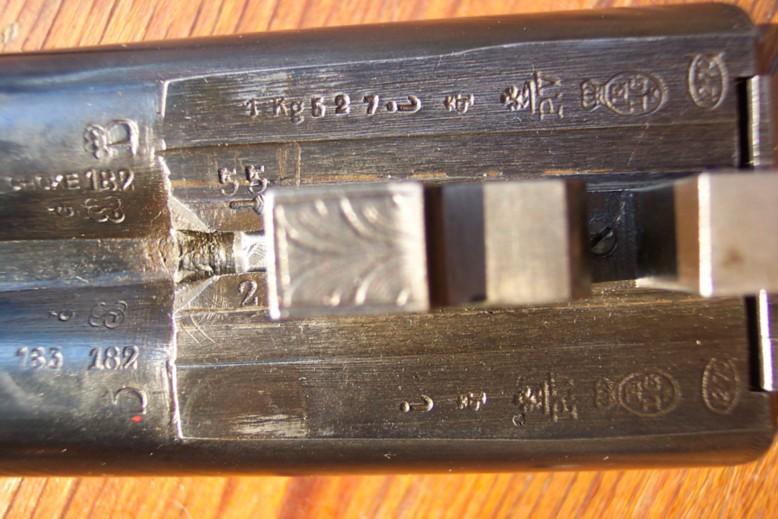
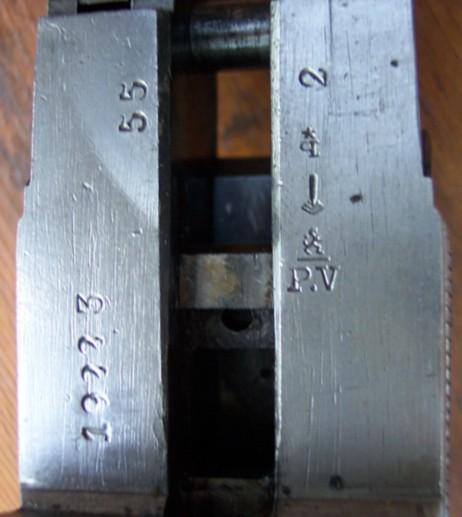
Marked "Liege united arms".
This mark belongs to the firm " FABRIQUE D'ARMES UNIES DE LIEGE S.A." street Trappé 22 in Liege - founded 01.06.1923. It acts of a shotgun gauge 16, with barrels juxtaposed, hammerless, key of opening on the top, triples bolt, pistol grip.
GG
